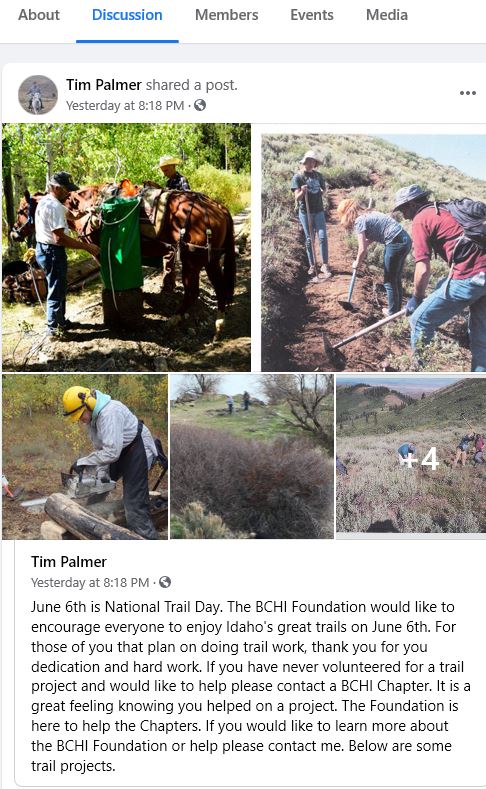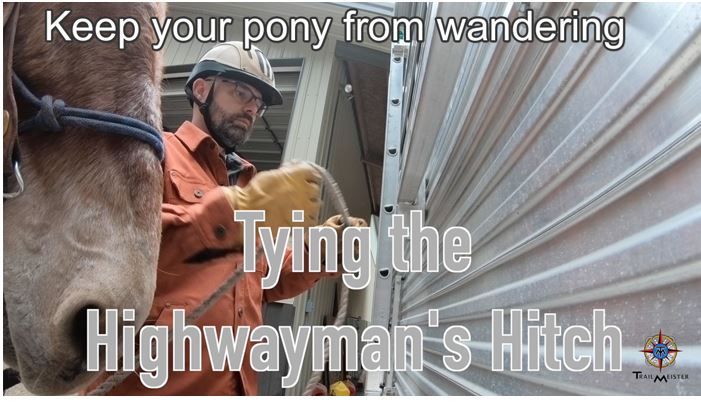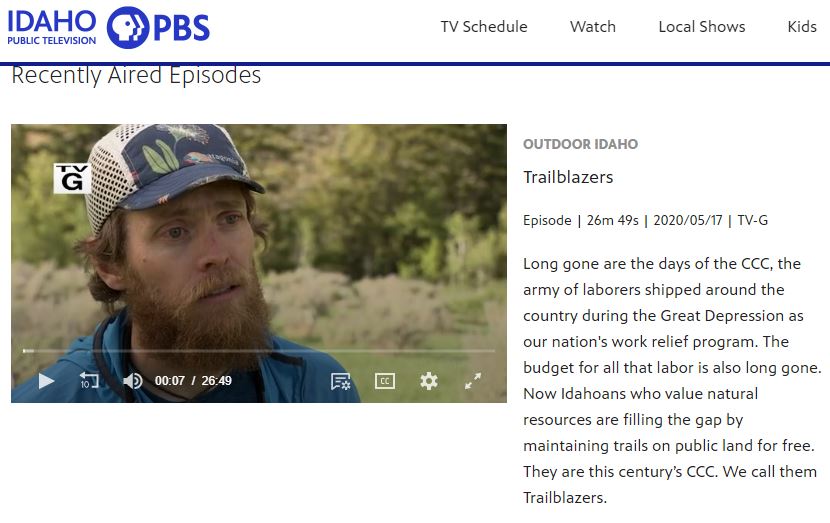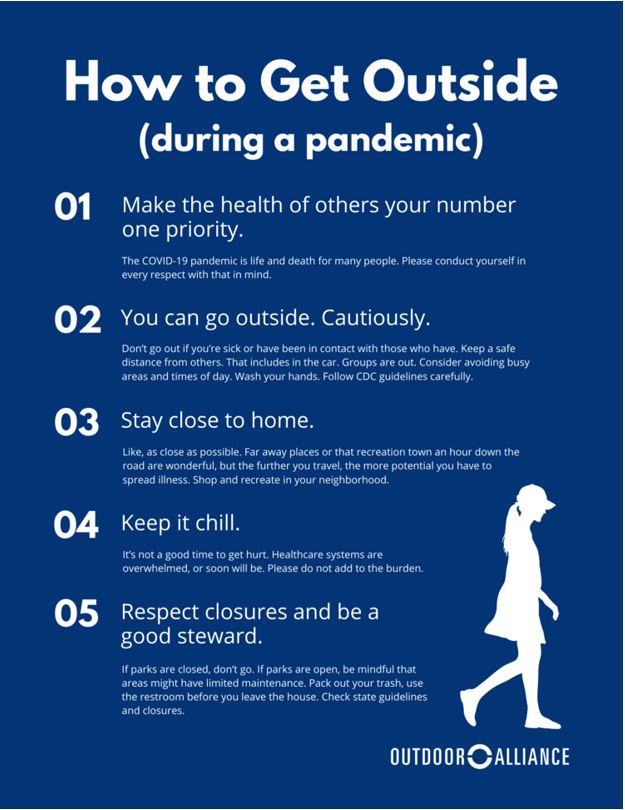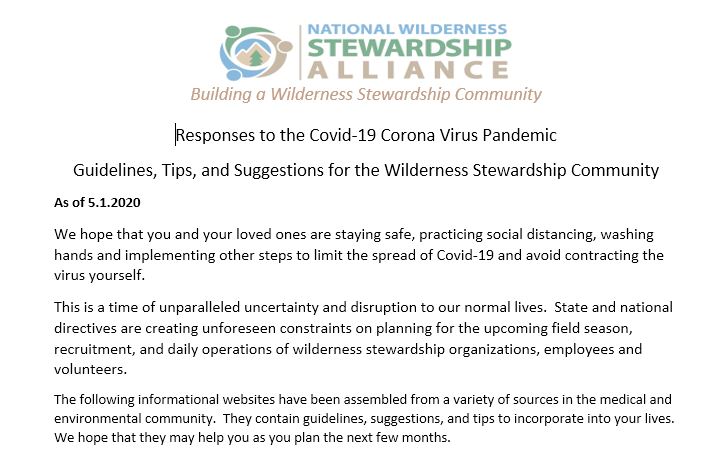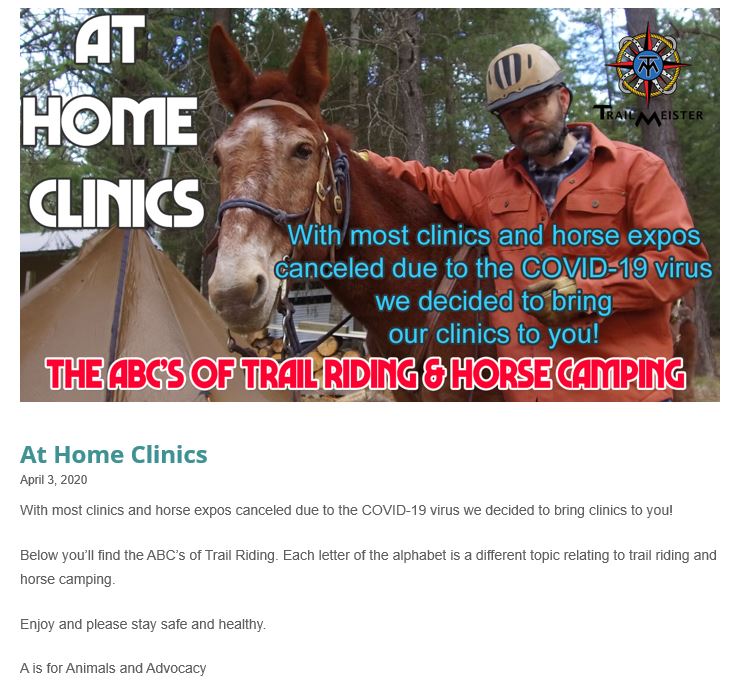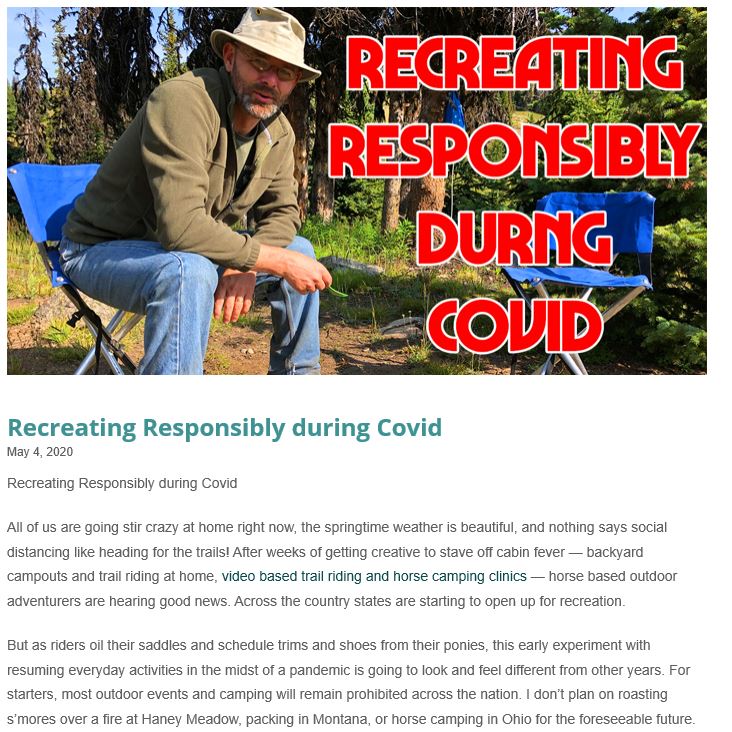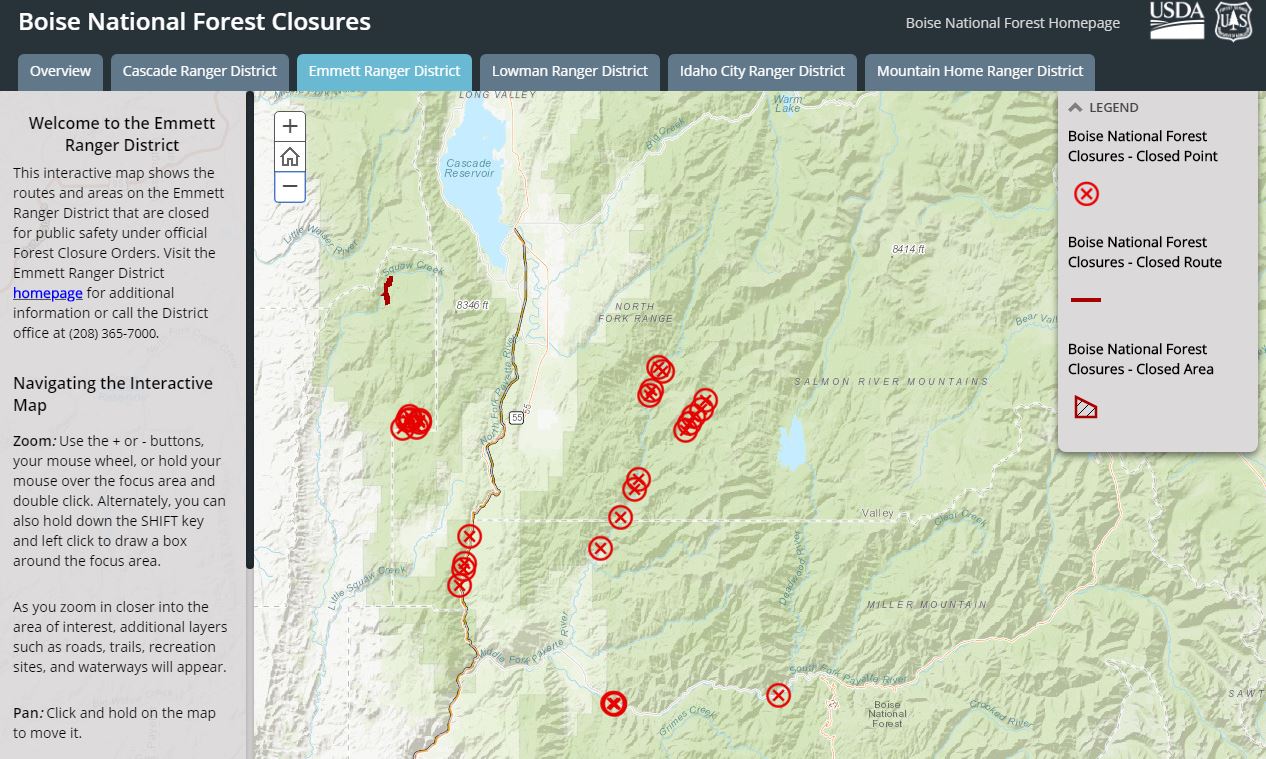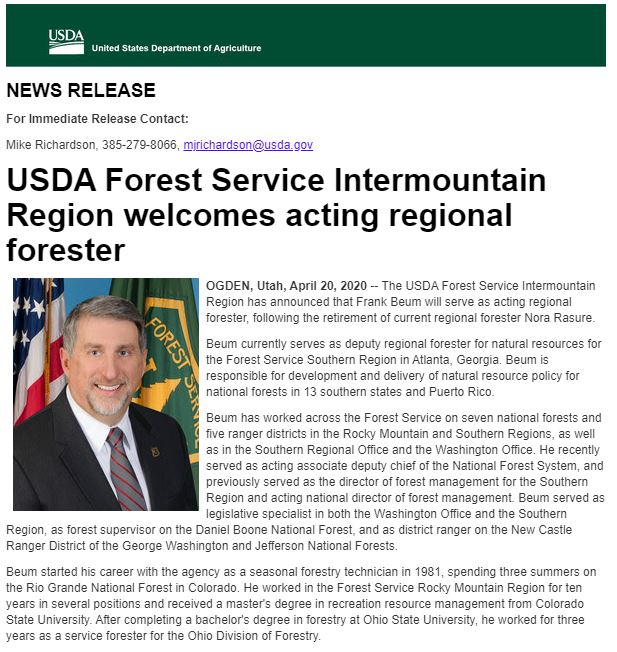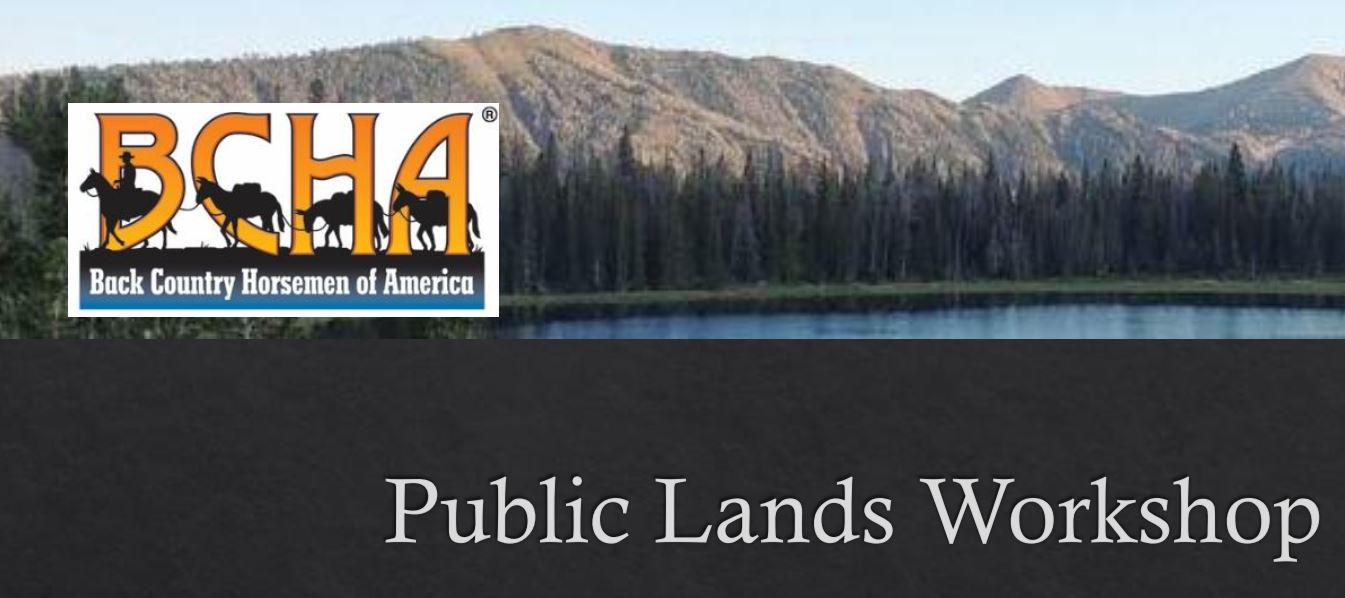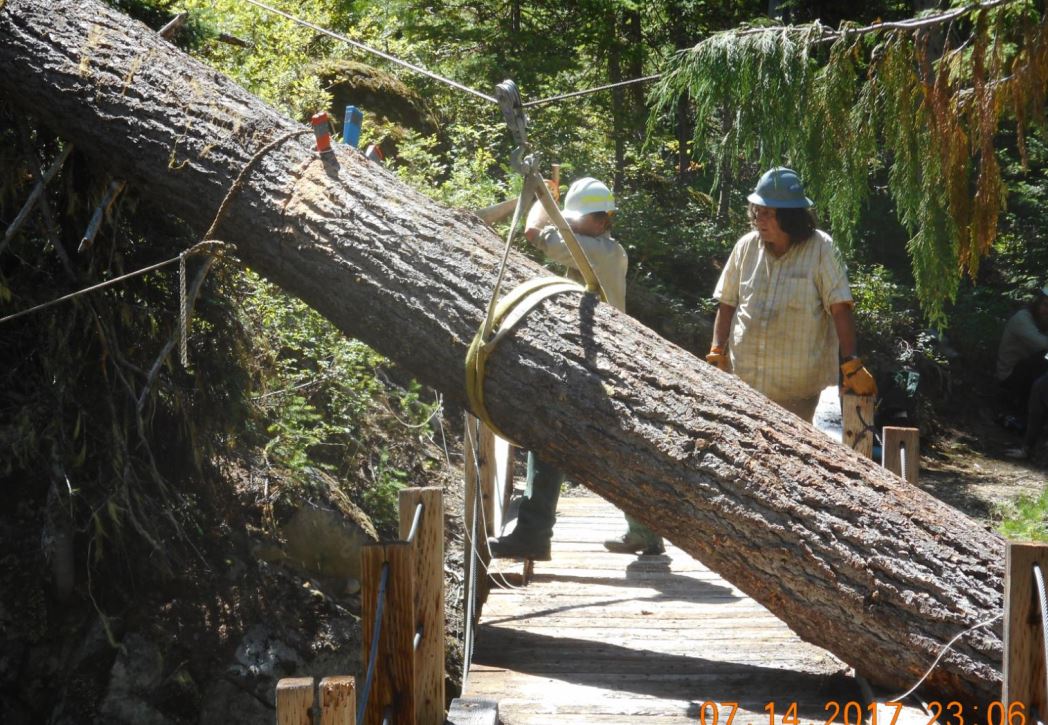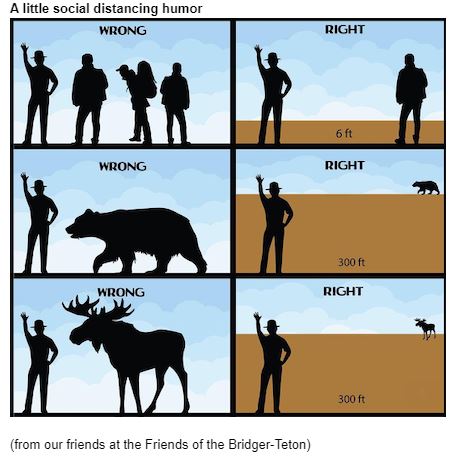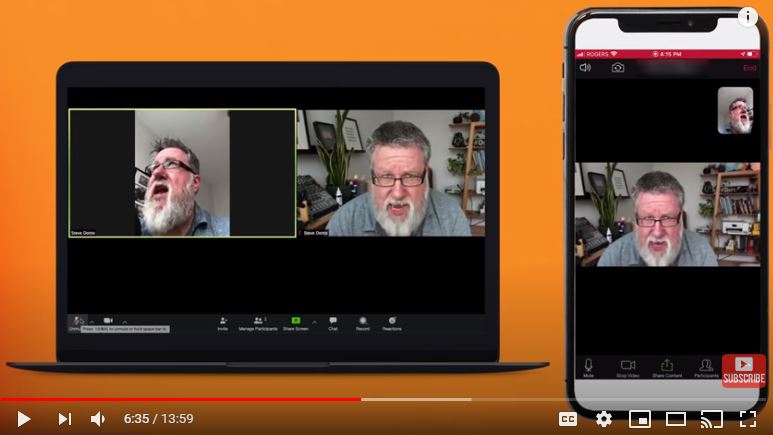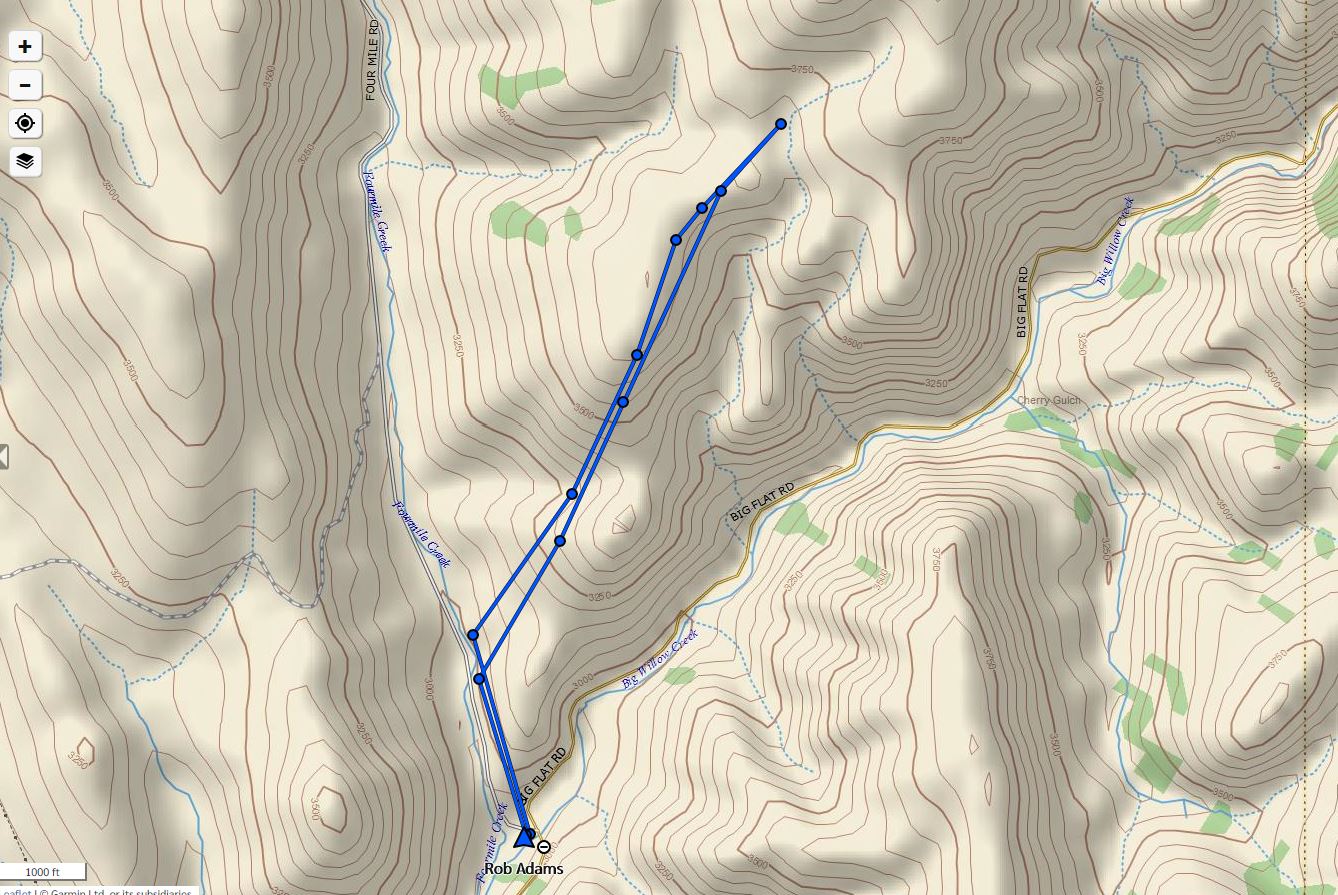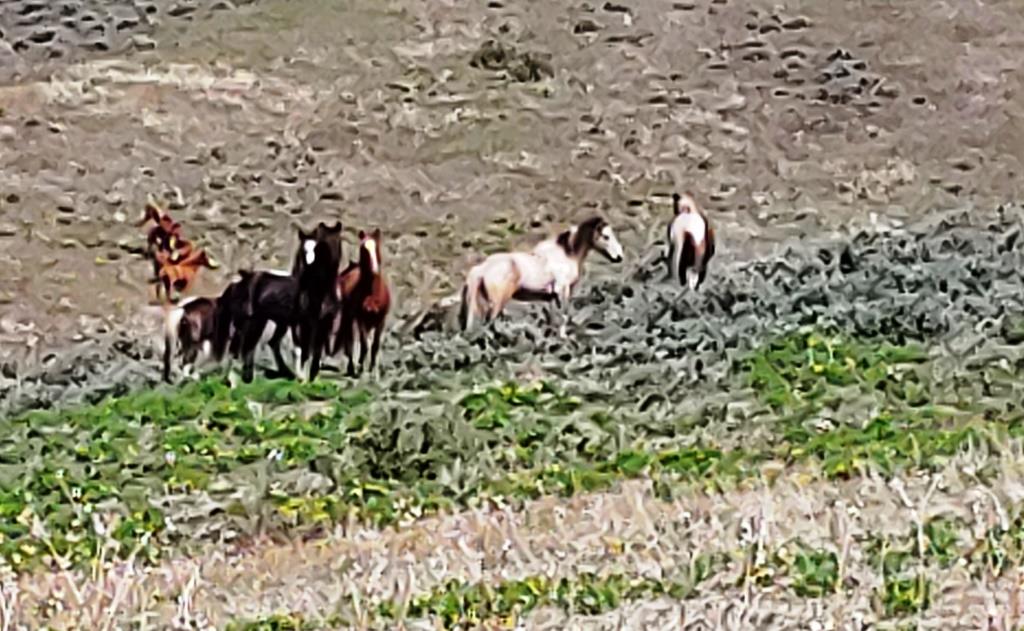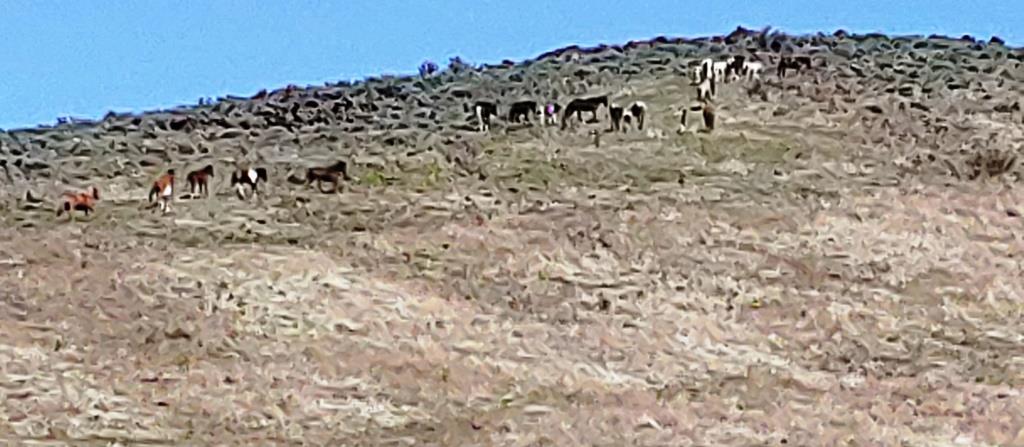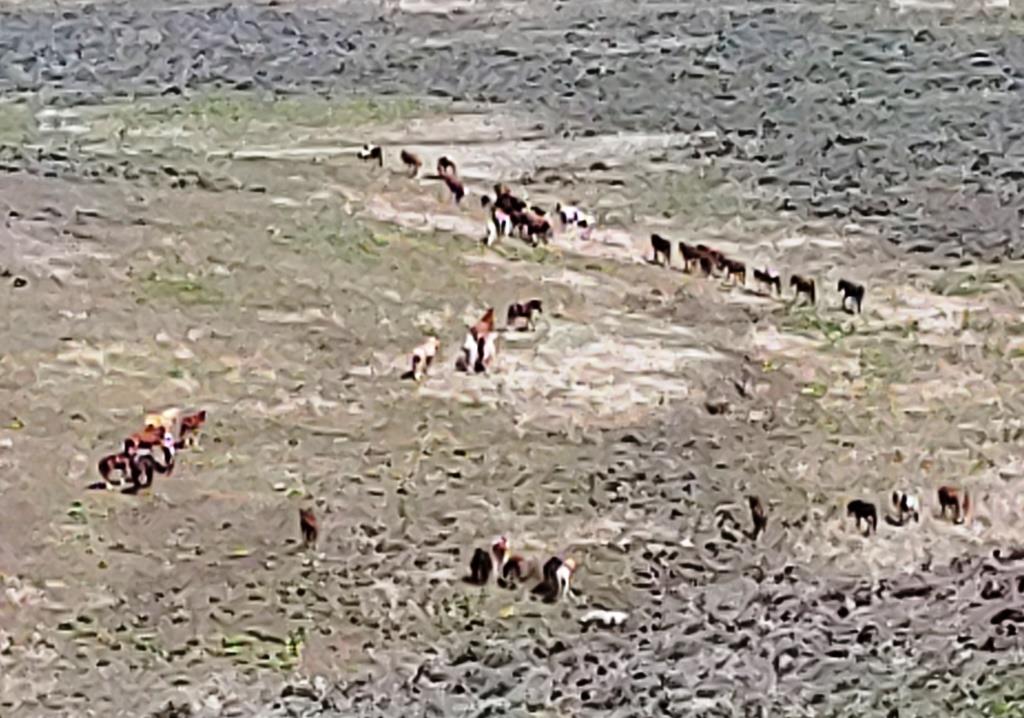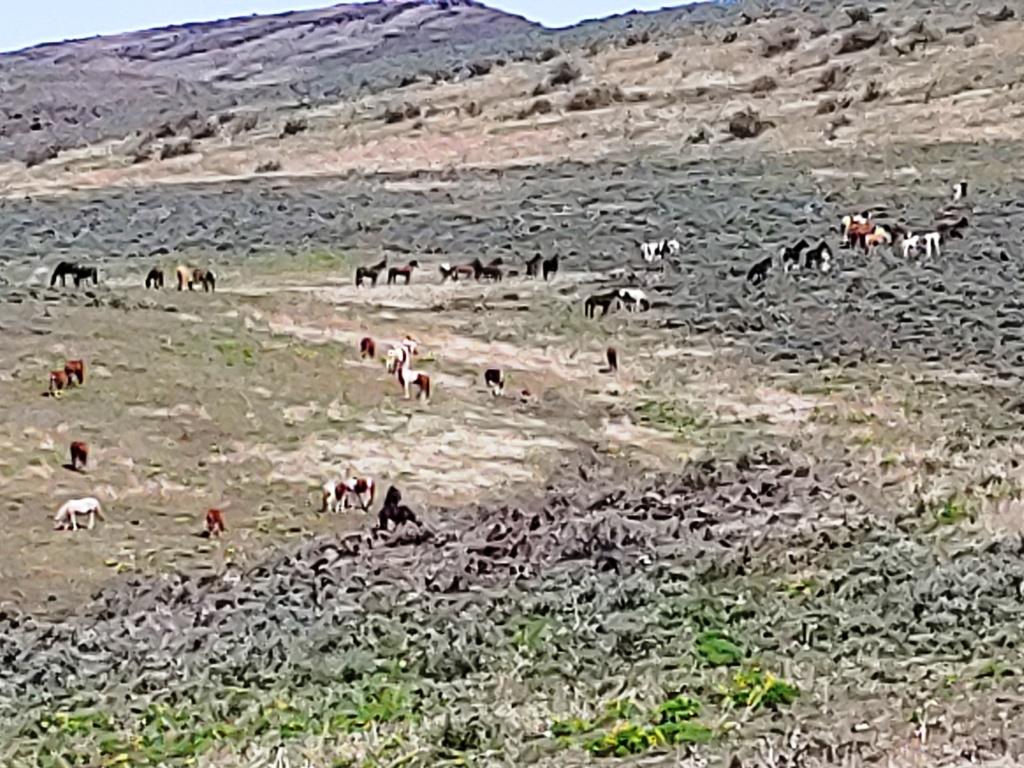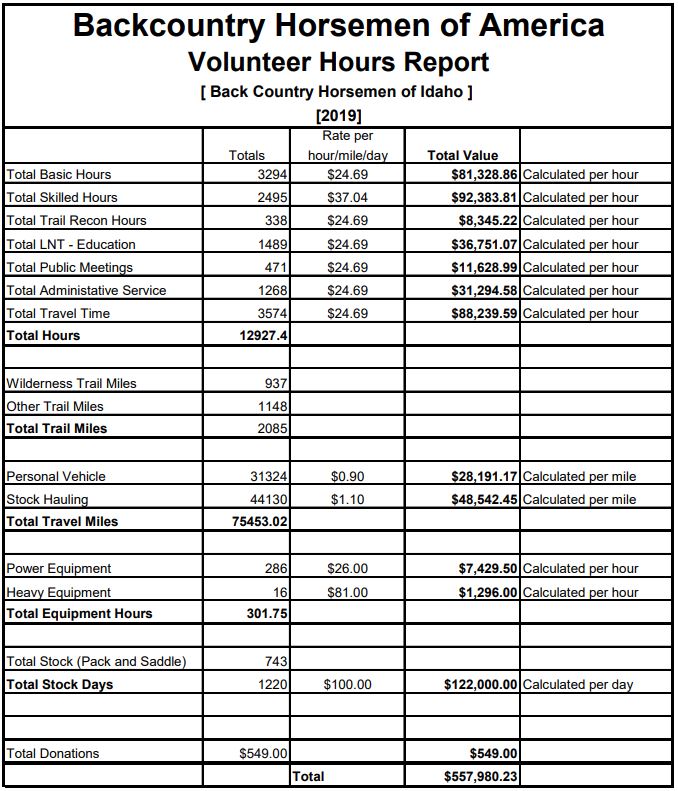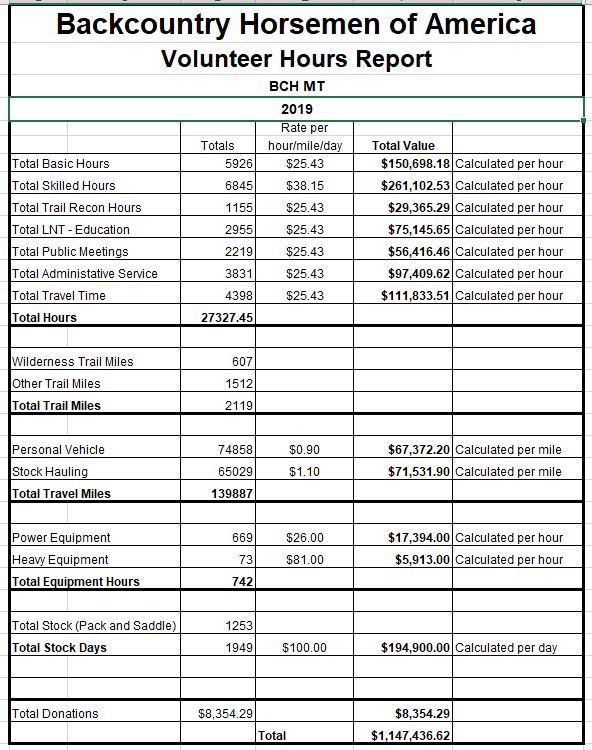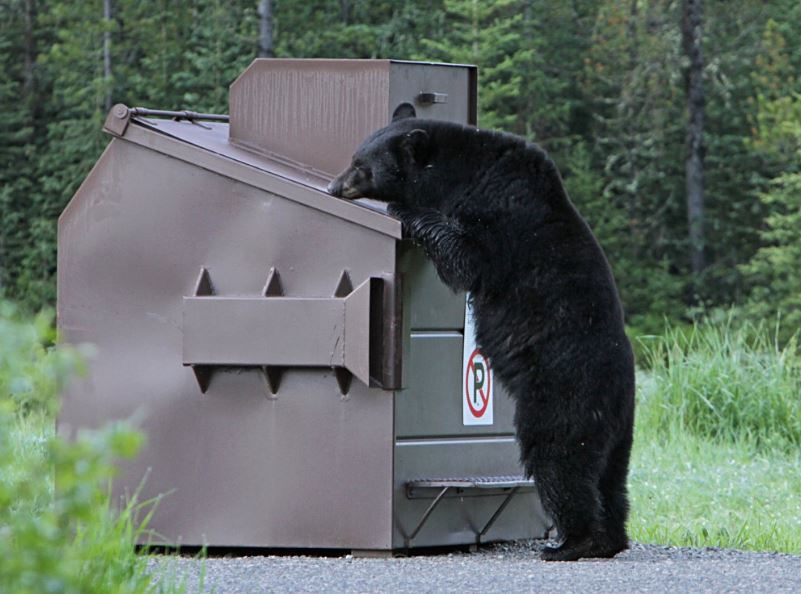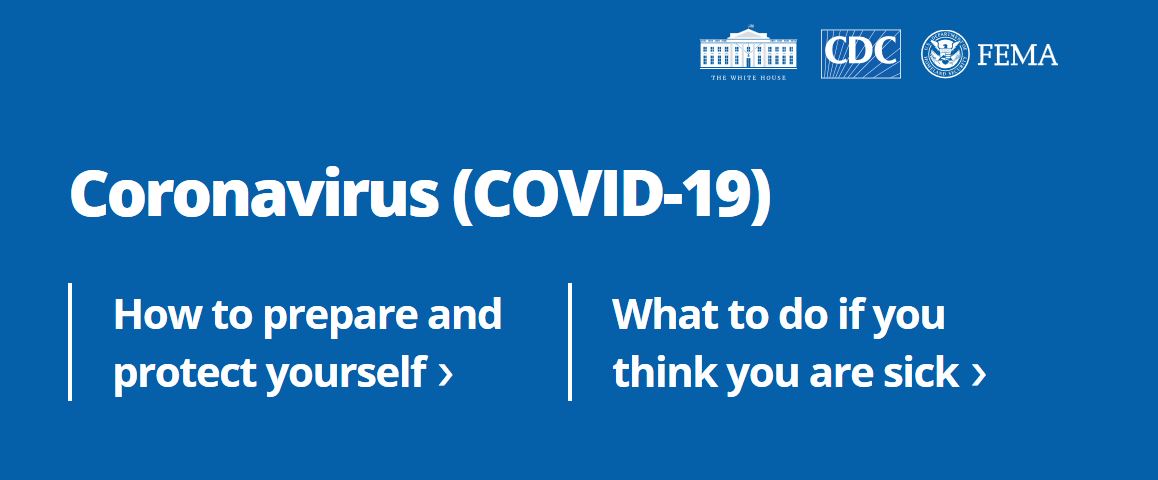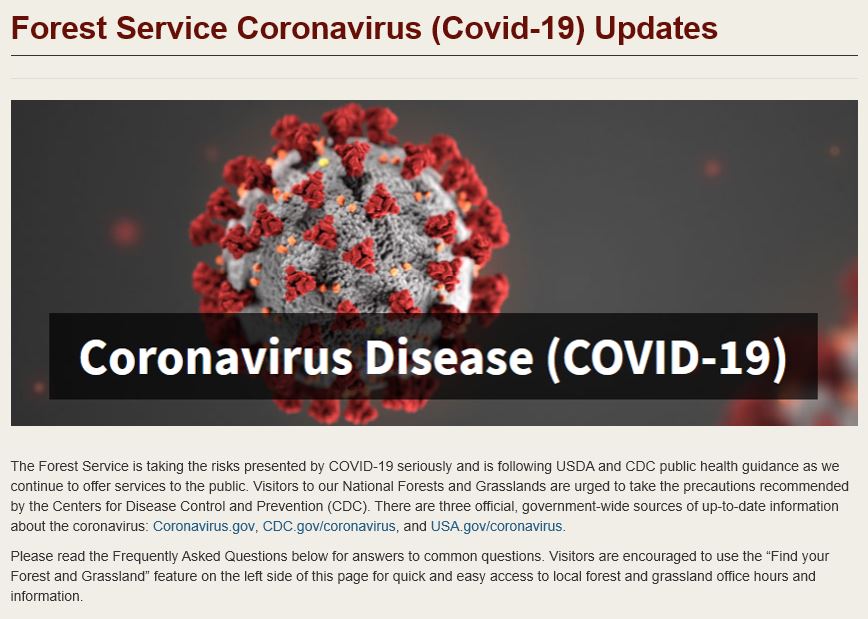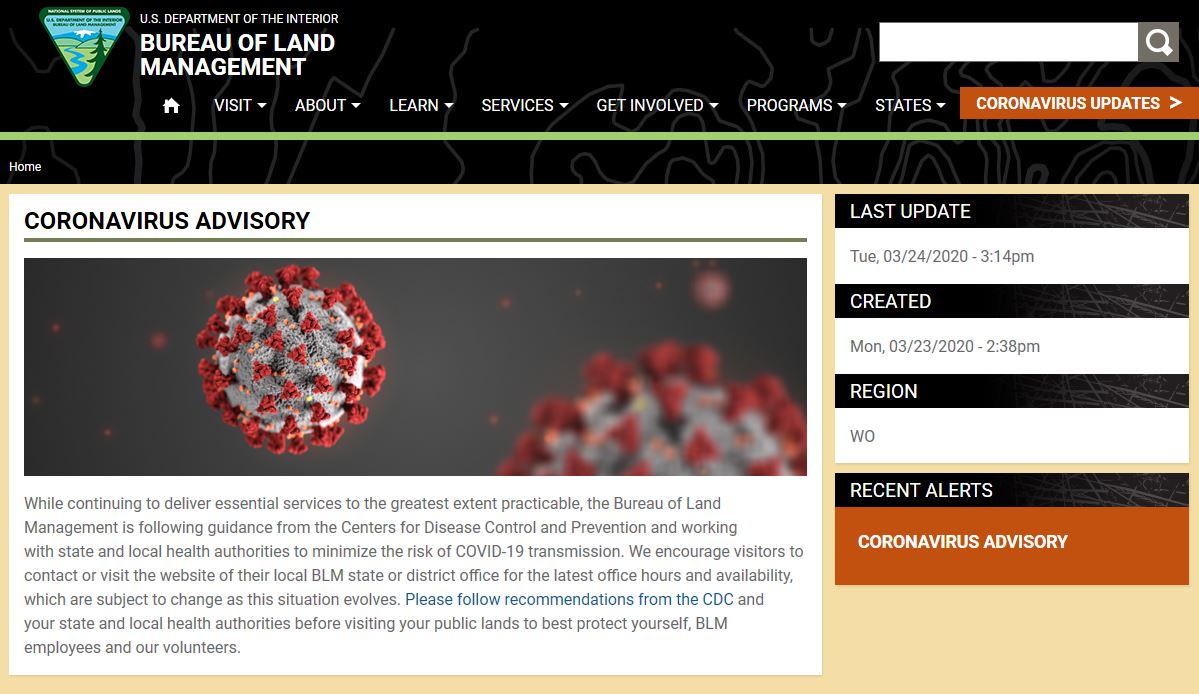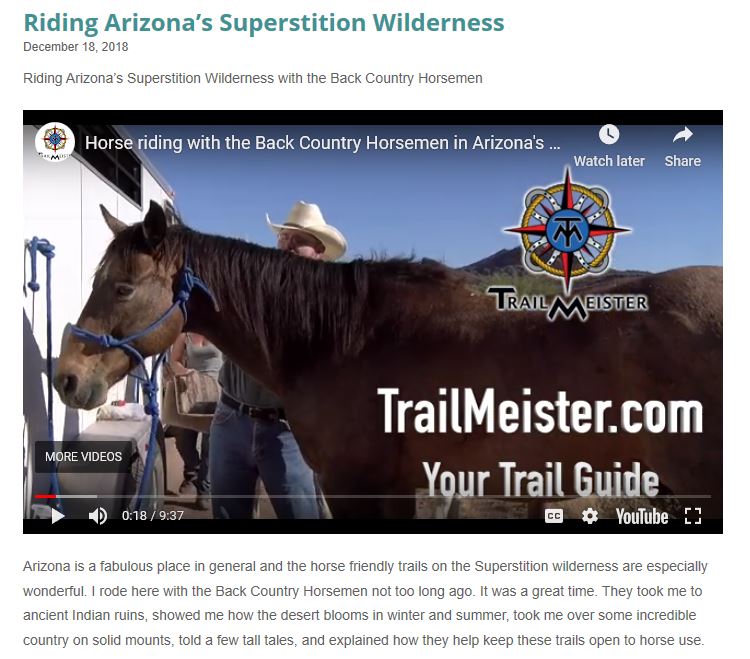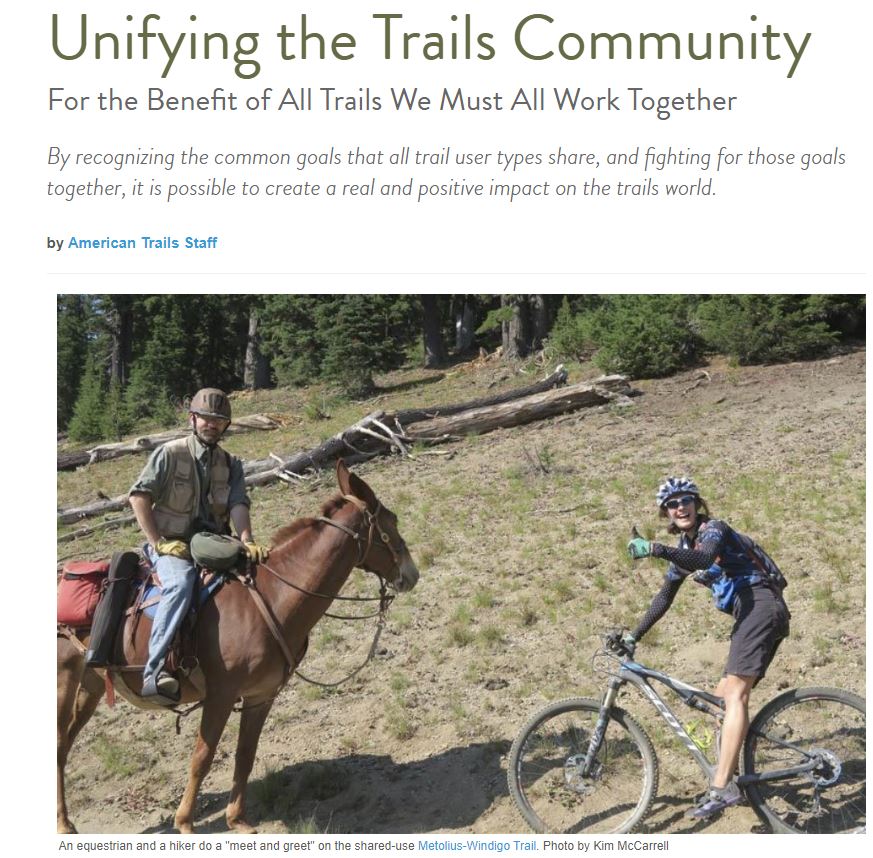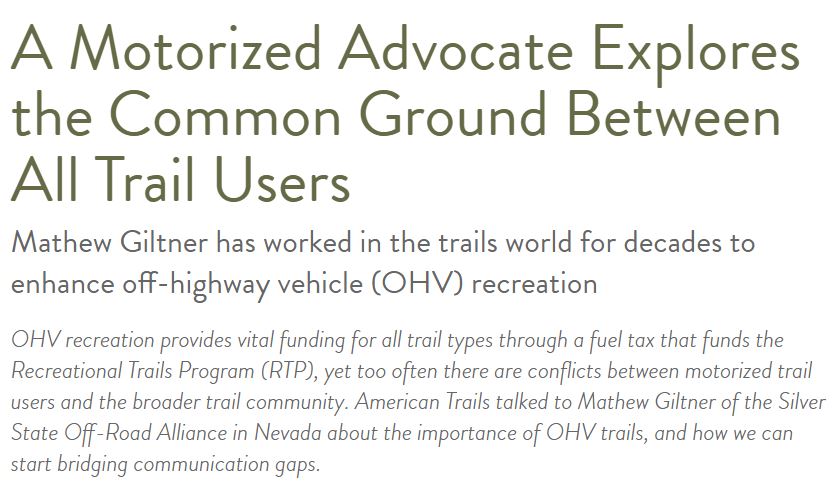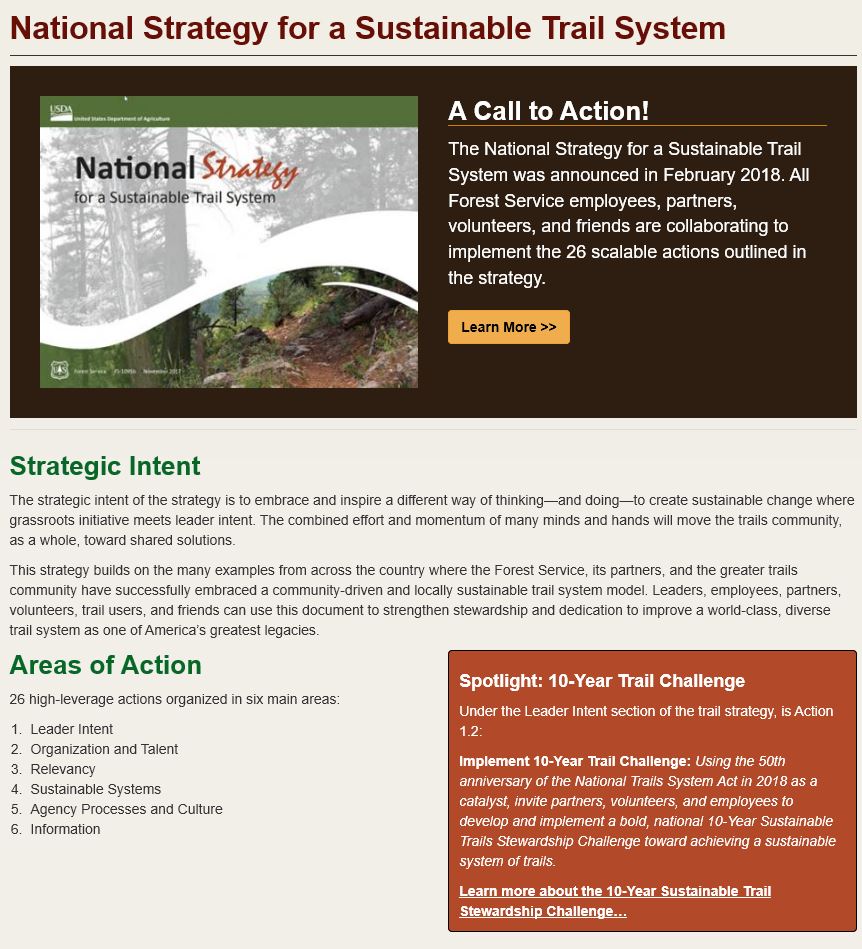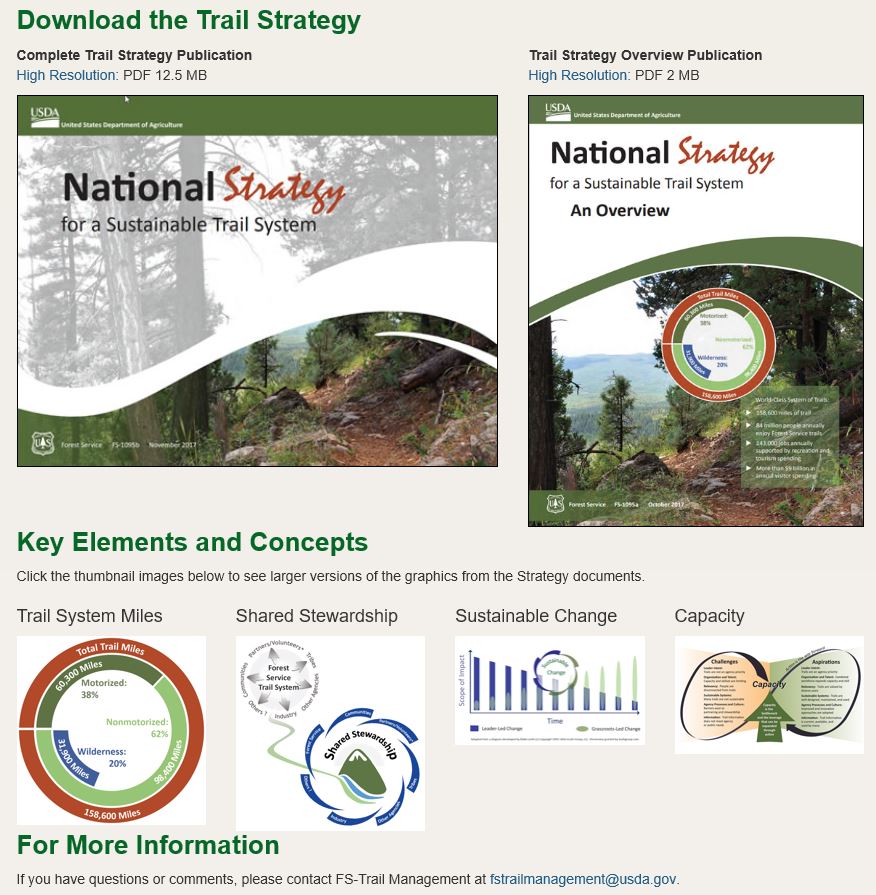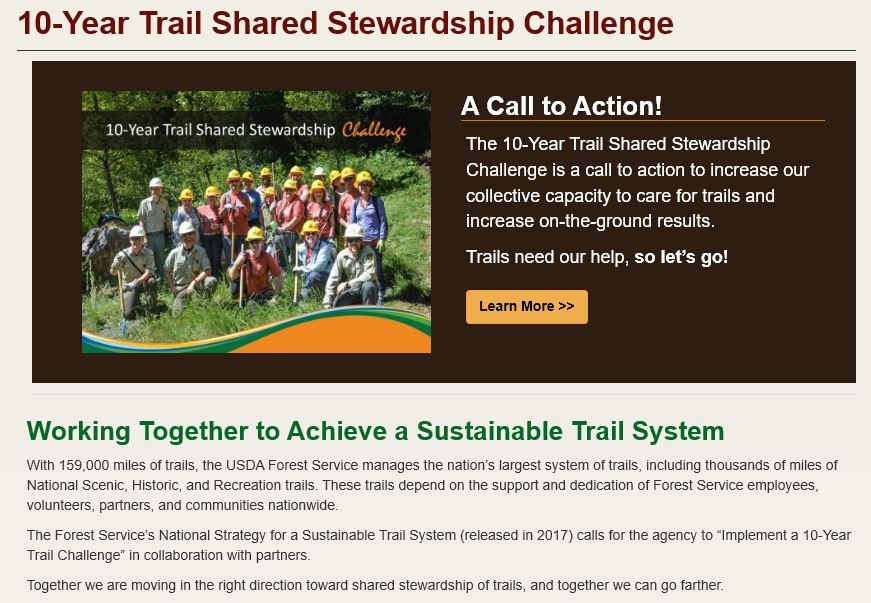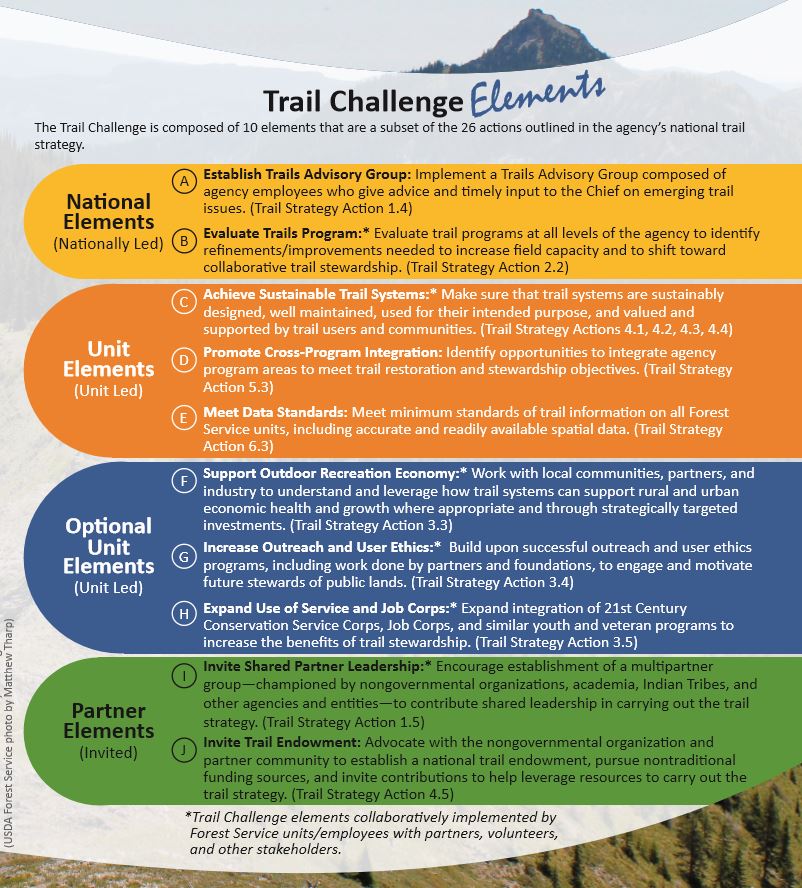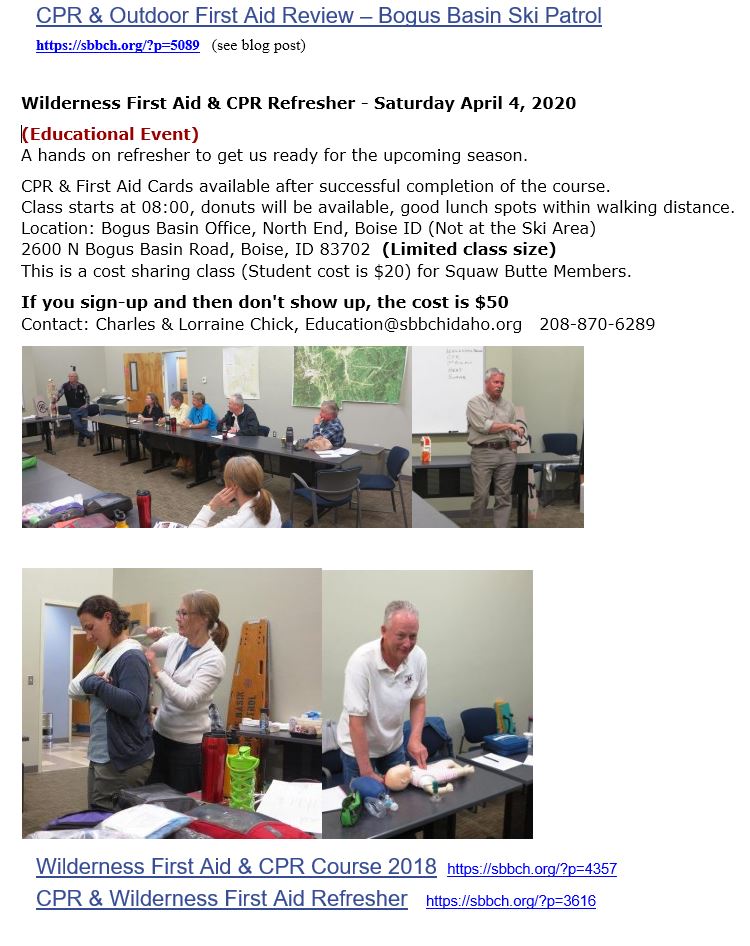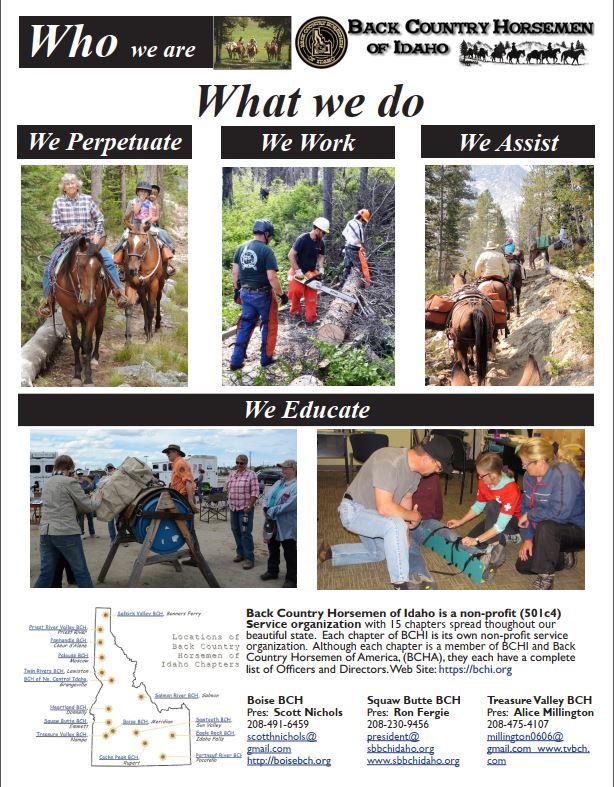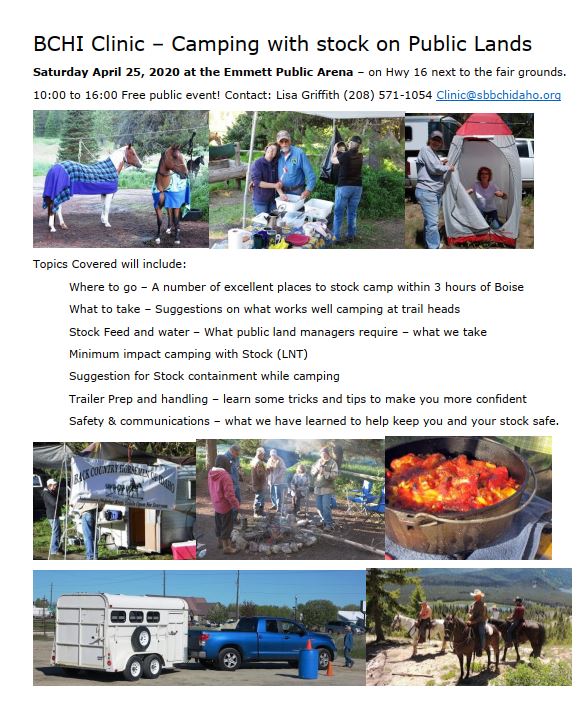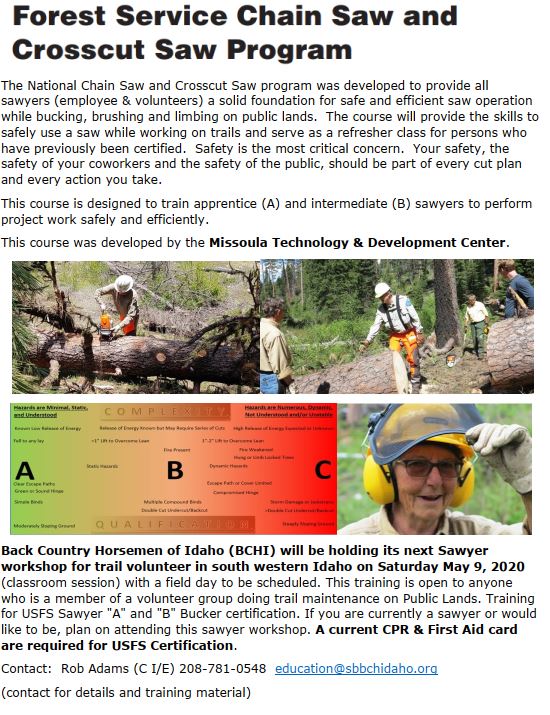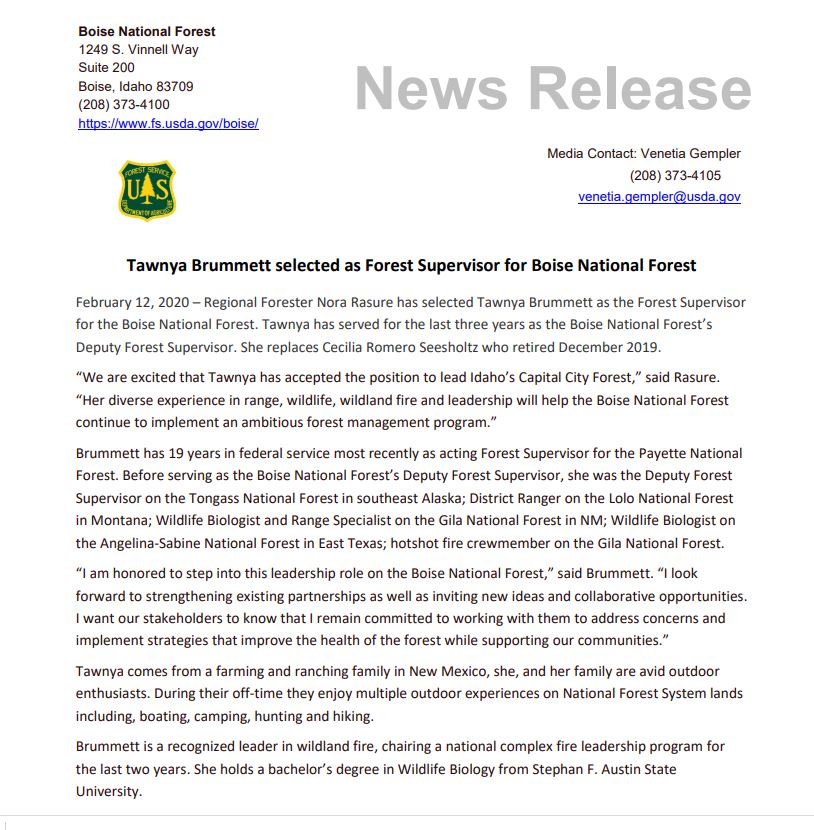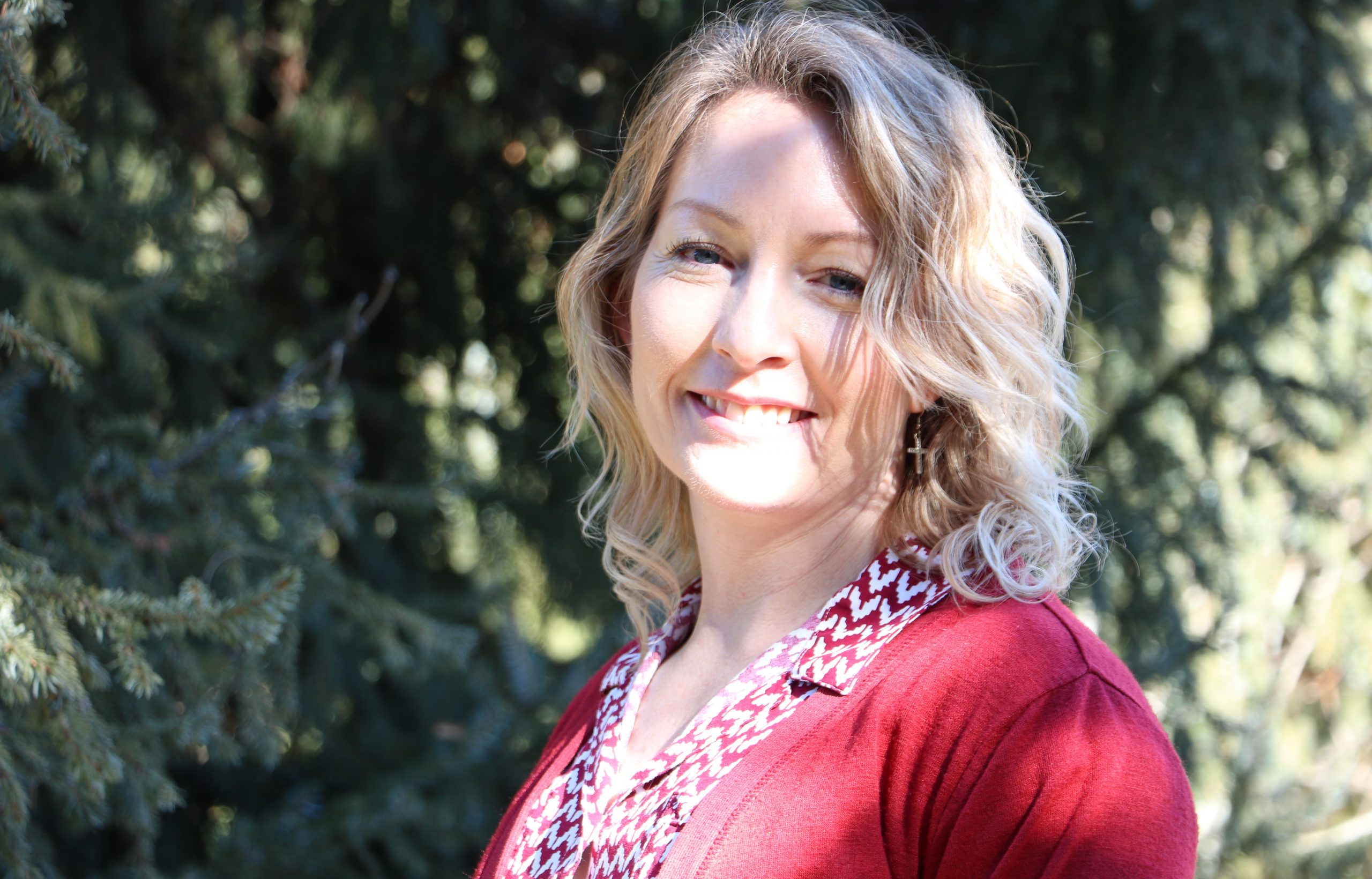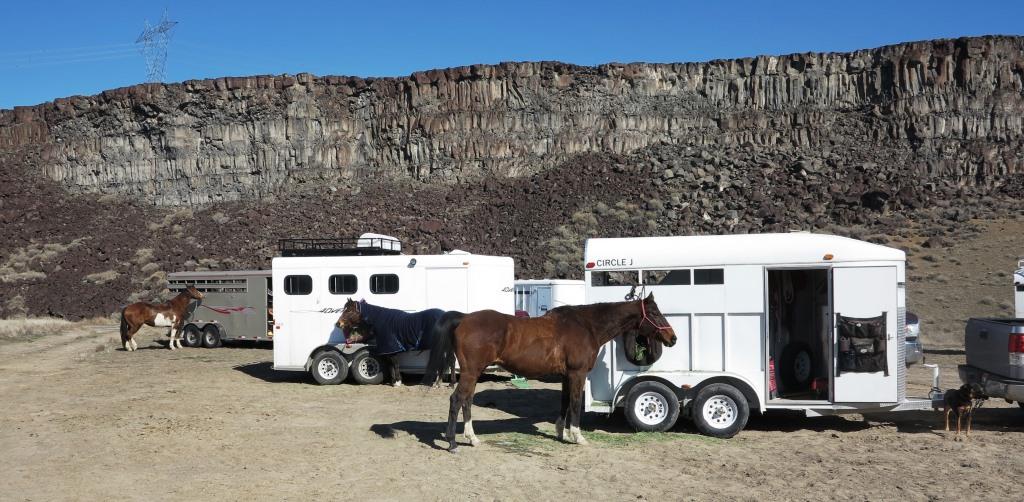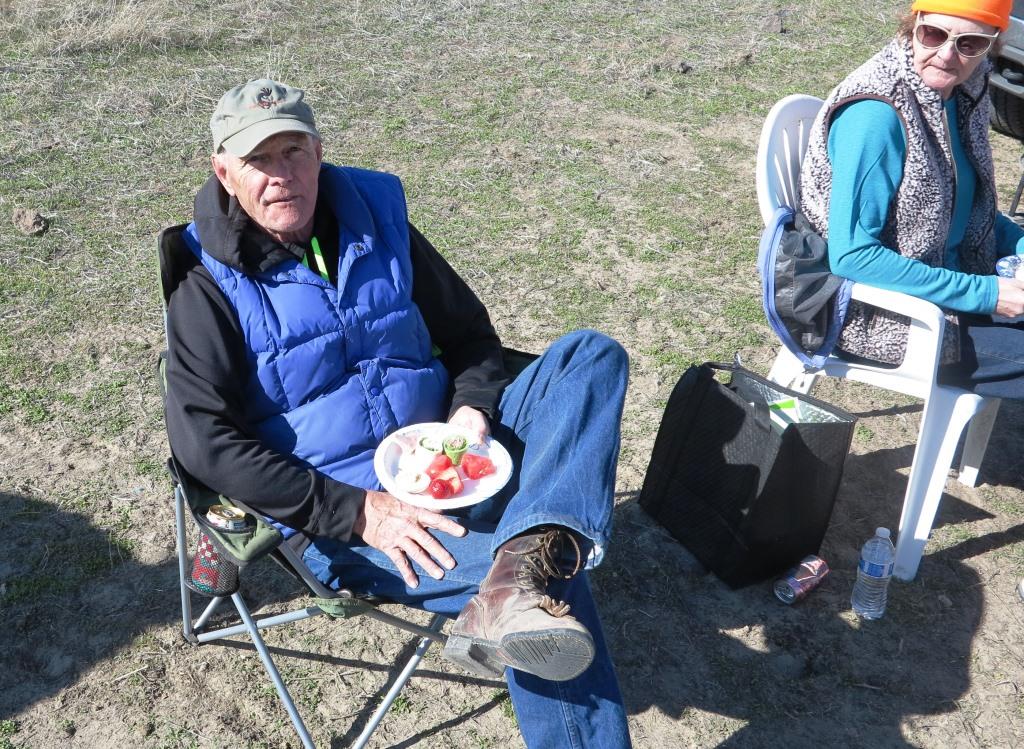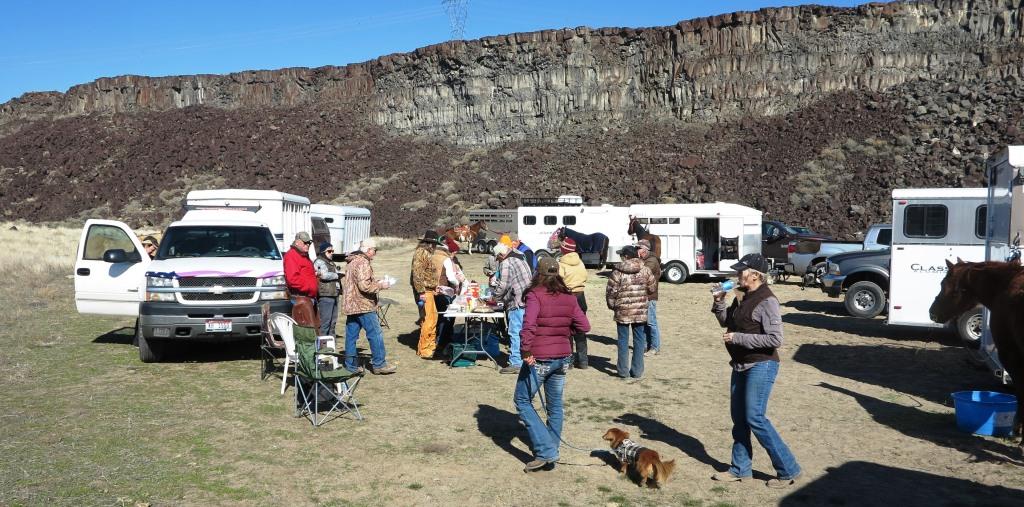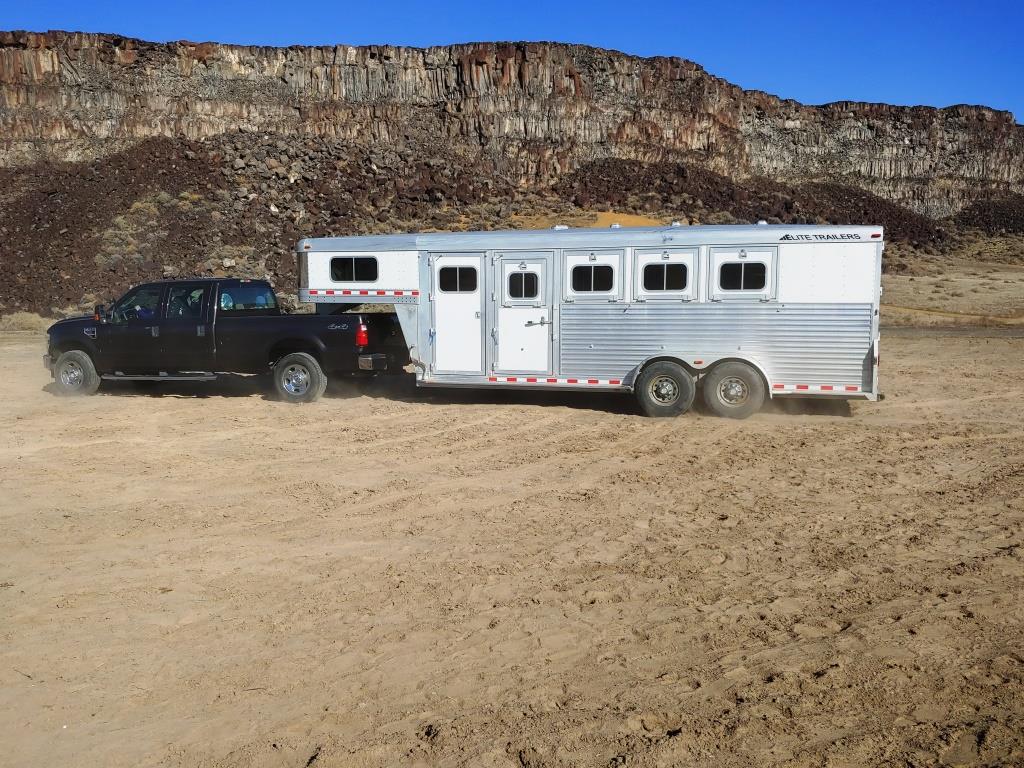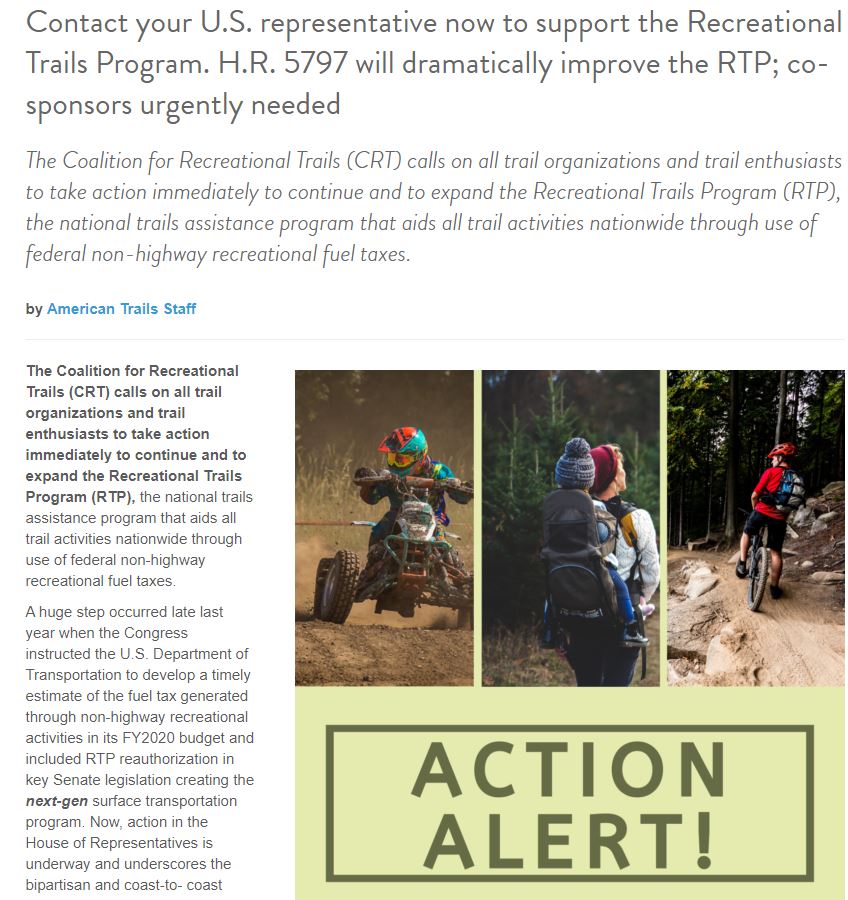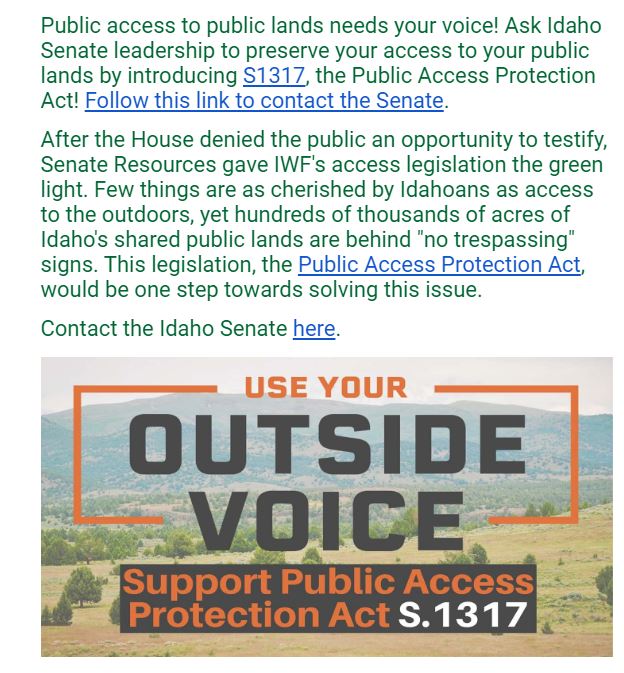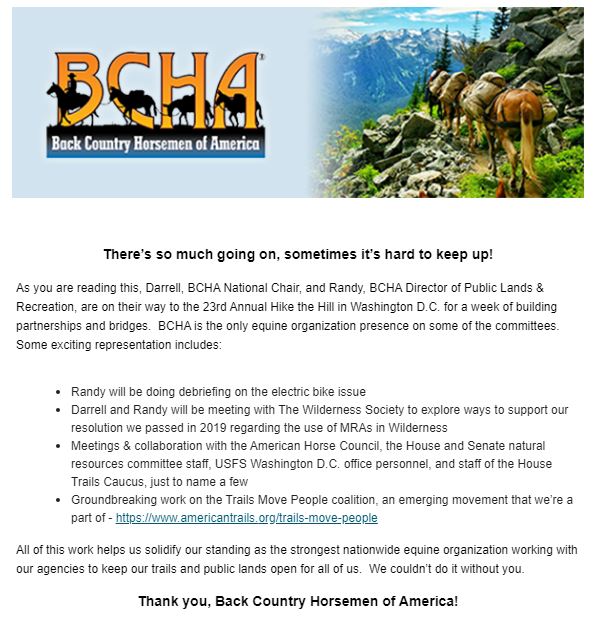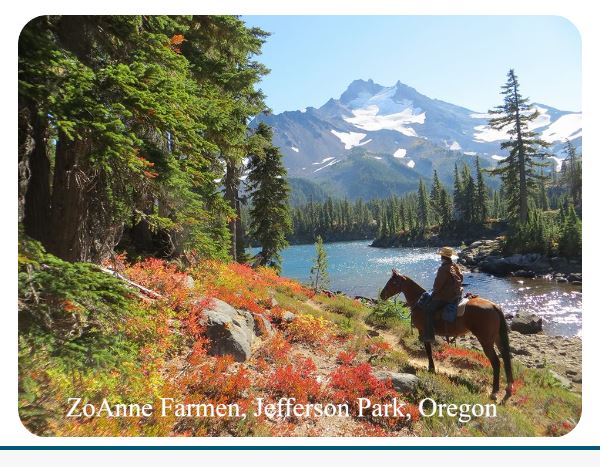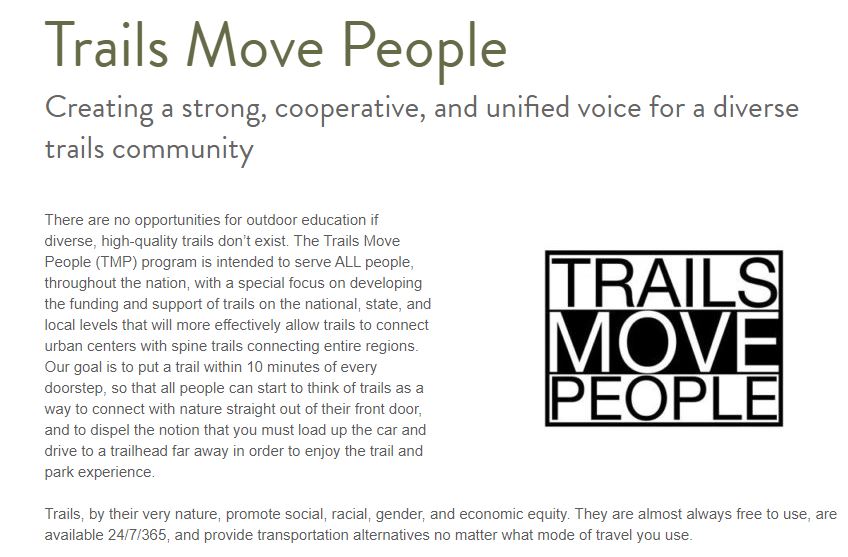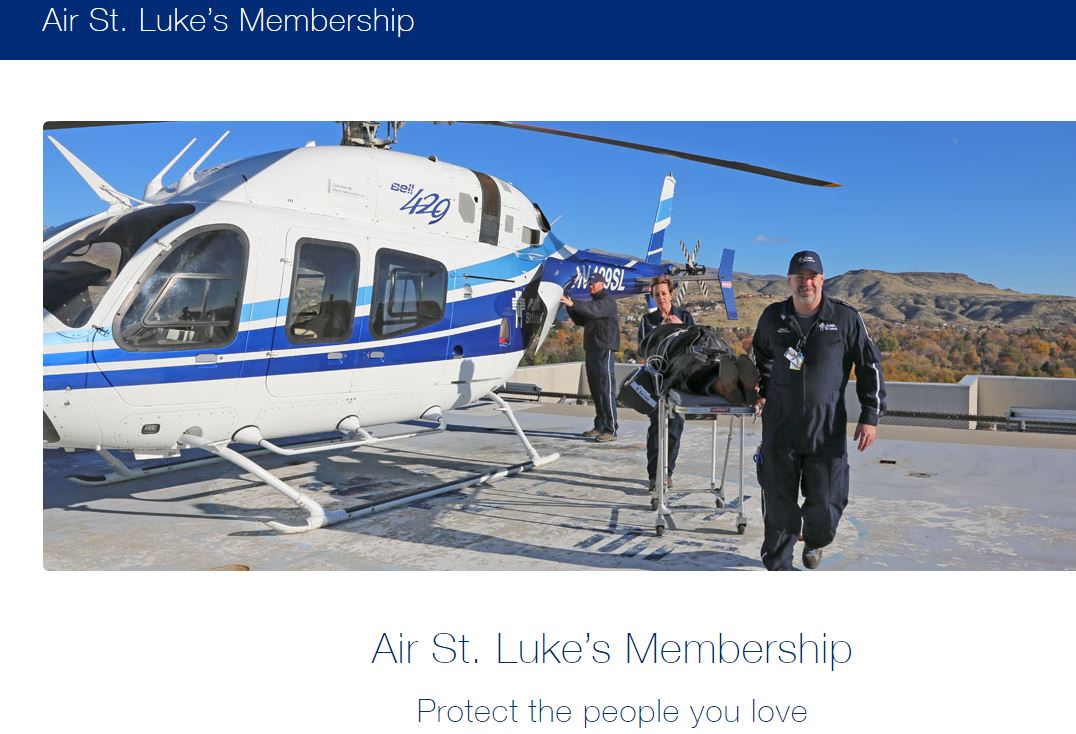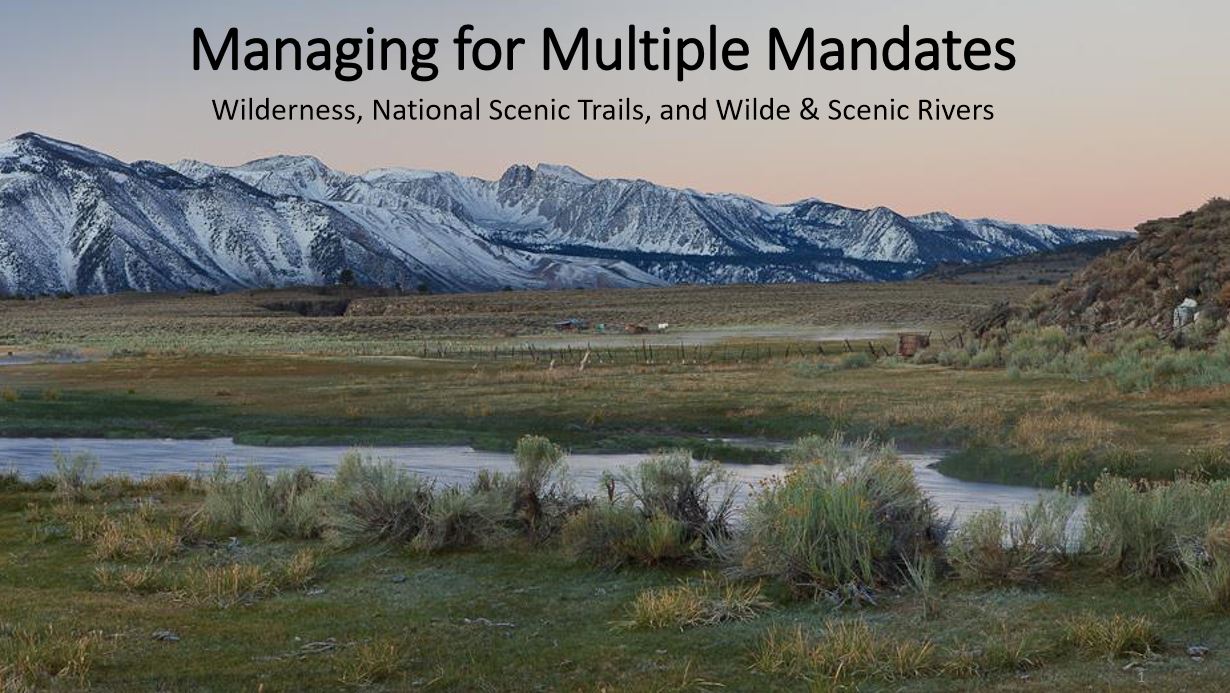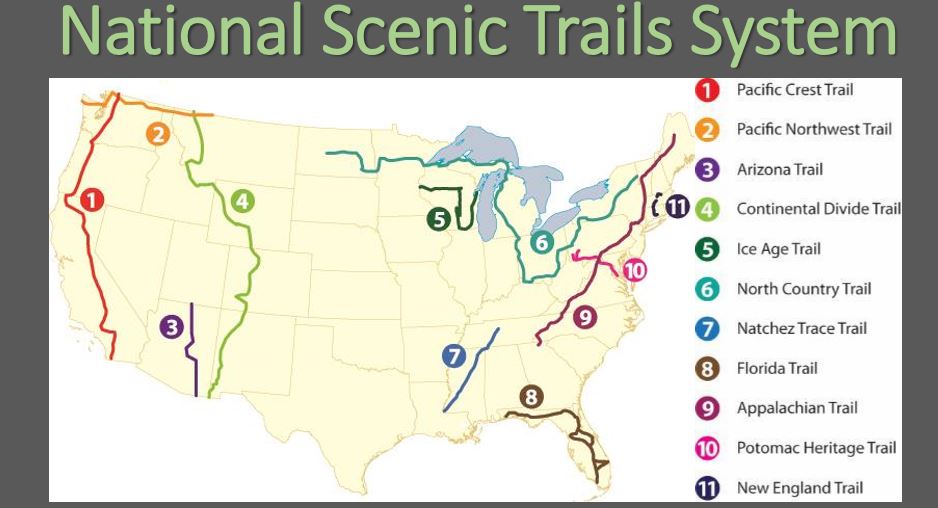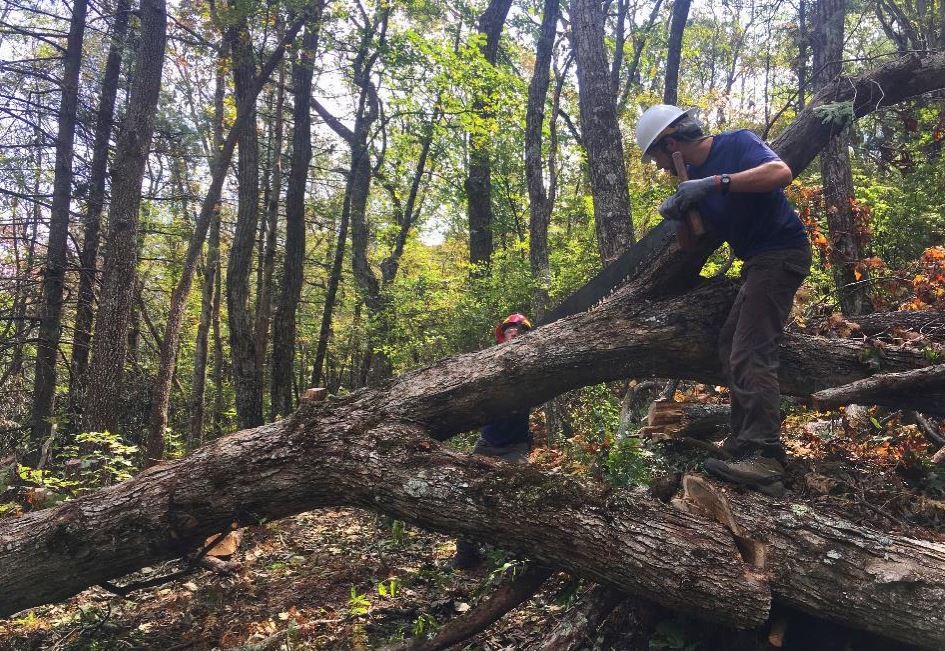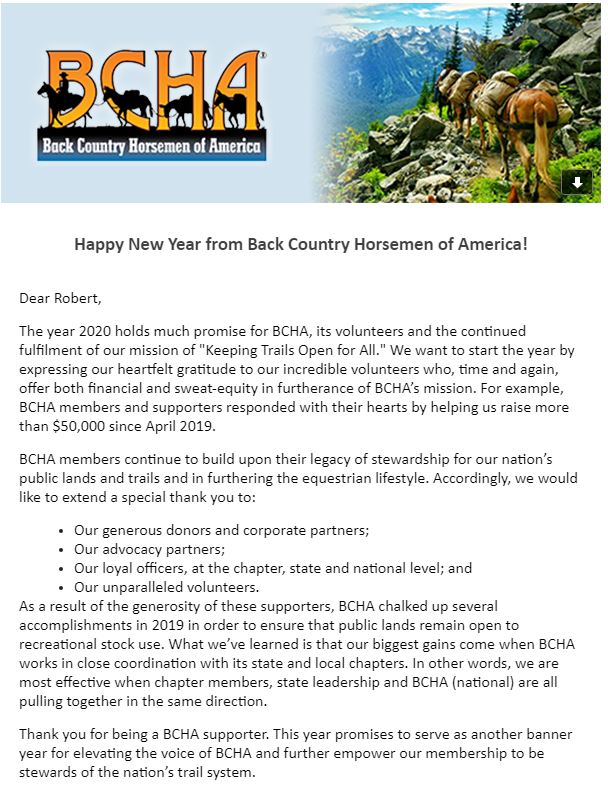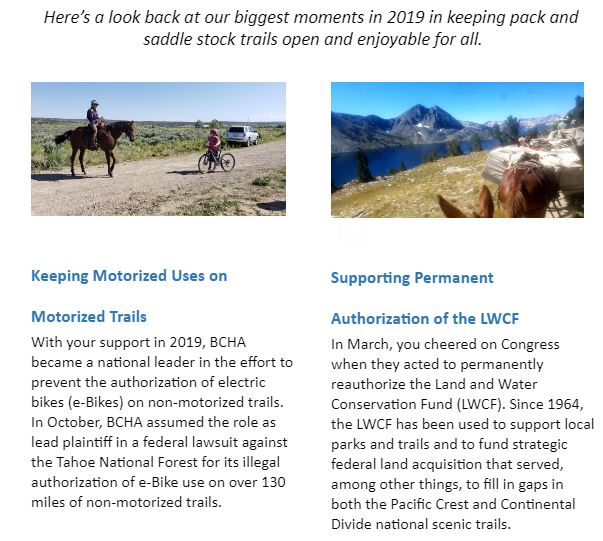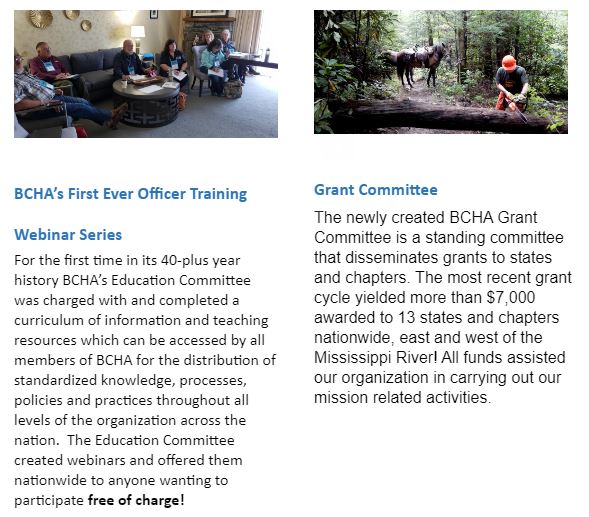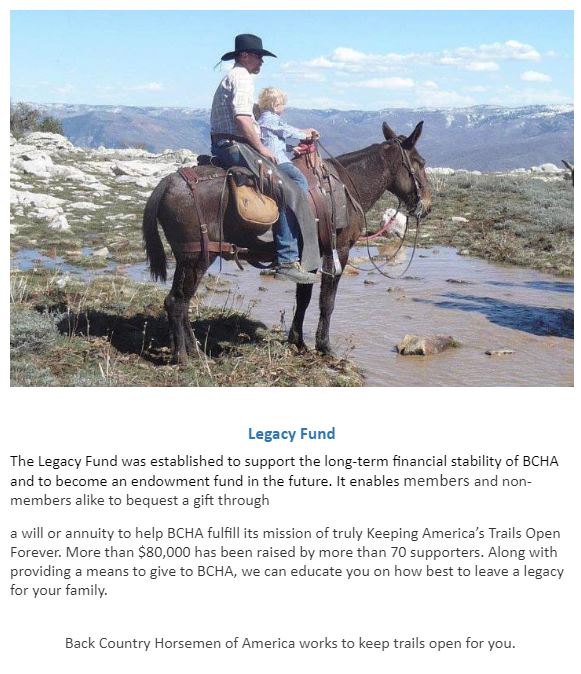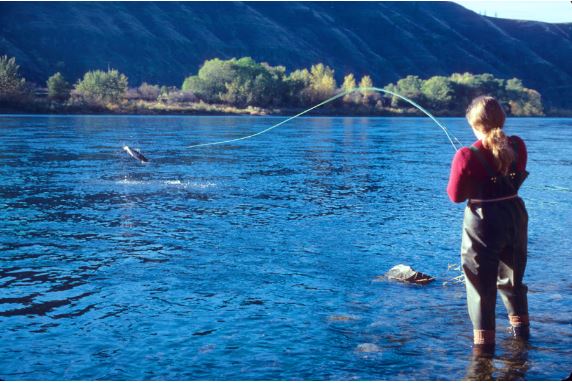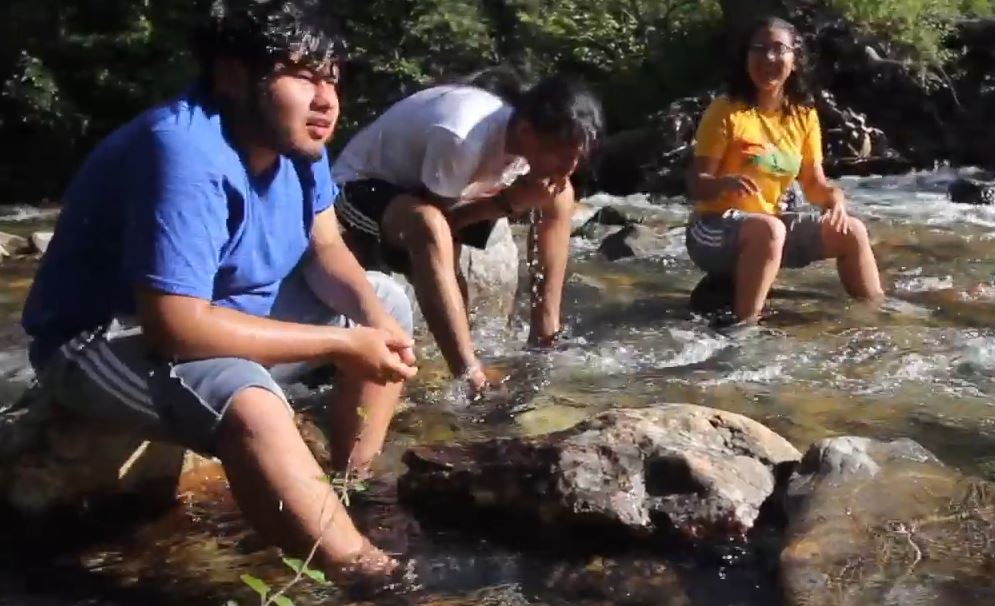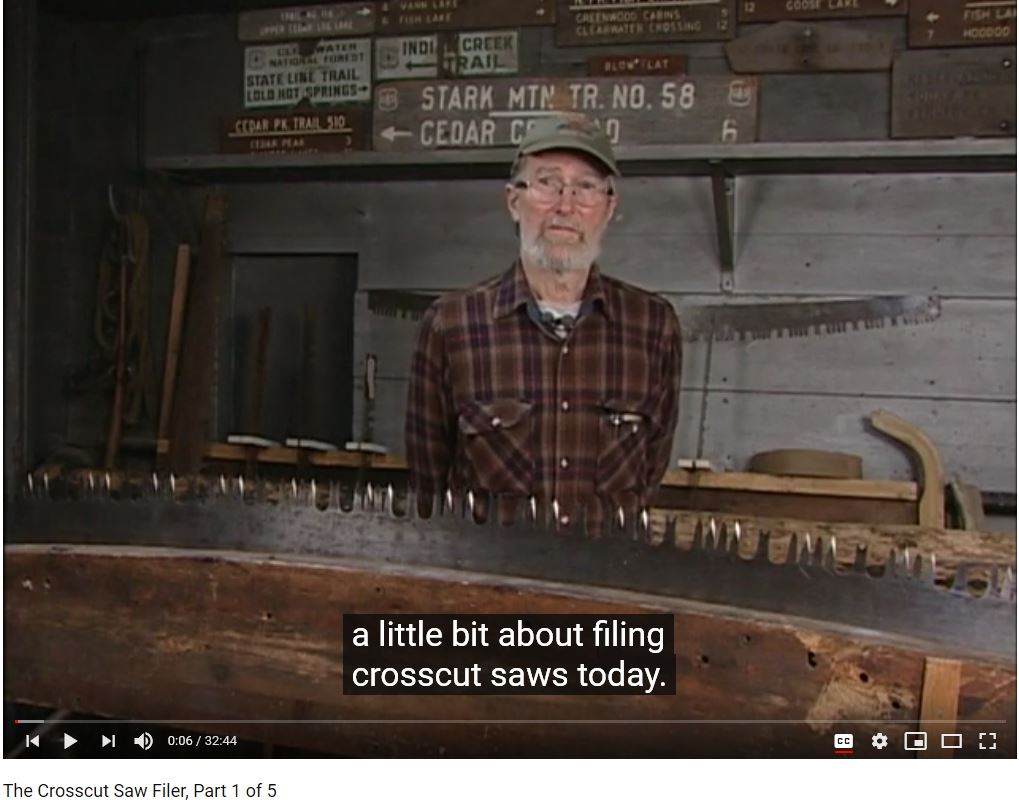How to Tie the Highwayman’s Hitch
How to tie the HIGHWAYMAN’S HITCH – Knot Tying Instructions
The Highwayman’s hitch is a quick-release hitch used for temporarily securing a load that will need to be released easily and cleanly, such as your horse! The hitch can be untied with a tug of the working end. The highwayman’s hitch can be tied in the middle of a rope, and so the working end does not need to be passed around the anchor, or rail, when tying or releasing.
Steps to Highwayman’s Hitch
1 – Double your rope to make the first bight in the rope and place the bight behind your rail.
2 – Make a second bight in the standing line and pass that bight through the first bight
3 – Take the working end and make a third bight.
4 – Pass the third bight through second and pull on the standing line to snug the knot.
The knot holds with tension on the standing part and can be released with a tug on the working end.
Special Report
Going Outdoors or Staying Inside
May 2020
Many people are turning to the outdoors to cope with the stress and concerns of the Corona Virus Pandemic. Volunteer groups may also be considering offering outdoor activities to the public to address this public use. But is this a good idea? Not really. Here is the rationale for why we need to encourage everyone to stay home and stay local.
Short Term Issues
The immediate effort nationwide is to prevent the spread of the Corona virus. This is being accomplished by requesting, and in some states demanding, that people self-quarantine, maintain social distancing, and practice good hygiene practices. Non-essential businesses where large number of people congregate like restaurants, theaters, bars, and gyms have been closed. Sporting events of all types have been cancelled and venues closed. State and local parks, some National Forest recreation sites, and National Parks are being closed as well. These closures initially were intended to last 2-3 weeks but may extend for 4-6 weeks or longer depending on local infection rates.
For stewardship organizations this strategy has meant cancelling meetings, trainings, and outdoor events for the near term. Volunteer activities can be expected to be curtailed for several months. While generally access to dispersed areas like wilderness is open, some popular trailheads may be closed to prevent people from congregating.
There has also been mixed messaging about going to the outdoors to escape the virus and other people. While we extoll the virtues of getting outdoors, what has happened instead is even more people seeking out these opportunities creating large crowds in popular areas. It is important that people stay close to home, and enjoy nature in their backyards, their neighborhoods, or at least for the time being, virtually. Protecting the health of our communities and avoiding strains on the medical infrastructure, especially in our vunerable rural areas, are critical right now.
This article says it all: High Country News: https://www.hcn.org/articles/covid19-as-covid19-spreads-how-do-you-ethically-get-outdoors/
Here are Leave No Trace suggestions for getting outdoors: https://lnt.org/the-leave-no-trace-recommendations-for-getting-outside-amidst-covid-19/
Here are suggestions from the Outdoor Alliance on getting outside during this crisis.
Stewardship Group Coping Strategies
Groups around the country are adapting to the crisis situation. Here are some ideas for your organization.
- Review your plans for the year and postpone or reschedule events to June or later.
- Consider doing training online or with video conferencing software like Zoom of GoToMeeting.
- Consider adapting your recruiting from a national to a local area model. Impacts to travel and concerns over the spread of the virus will continue for months impacting broad recruitment area strategies. Local recruitment may offer new opportunities for relationship building and capacity growth while providing needed employment stimulus locally.
- Check in with your agency partners to see what current policies are and what resources they might have available. The Park Service has created a webpage for Partners during this crisis at: https://www.nps.gov/subjects/partnerships/publichealthforpartners.htm
- If you have existing agreements with agency partners, start discussing now how closures will affect recruiting and summer programs. Adjust your agreements as necessary.
- The current stand down may result in additional year end fund availability. Never too early to start discussing future projects and potential agreements with agency partners to put these funds to good use.
 “If my world should end today I will have led a good life. My bucket list is not overflowing with unfulfilled dreams. Oh, there are a lot of things that I’d still like to do, but most of them I’ve done already and simply want to do again or do in new places. My regrets do not involve unfulfilled dreams, they involve leaving the people behind that are most dear to me and have comprised the fabric and color of my life.
“If my world should end today I will have led a good life. My bucket list is not overflowing with unfulfilled dreams. Oh, there are a lot of things that I’d still like to do, but most of them I’ve done already and simply want to do again or do in new places. My regrets do not involve unfulfilled dreams, they involve leaving the people behind that are most dear to me and have comprised the fabric and color of my life.
As a boy growing up in South Dakota, I was inspired by the movie cowboys – Gene Autry, Roy Rogers, Randolph Scott, and others – of heroes on horses or sitting at a campfire singing and playing a guitar while the sun set in the west, and then, of course, riding off into the sunset with a beautiful girl at my side. I was never a cowboy, but I’ve ridden many miles of high country trail, smelled horse sweat and listened to the creak of a saddle, and I’ve been blessed with the love of a good woman, my wife, life partner, and best friend, and the company of a number of good horses and dogs. Money cannot buy the experiences I’ve enjoyed. I did it all.
I have lived my dreams. While many people hope they are able to take a vacation once a year, my life has been a vacation. My work has involved two very important elements of my dreams: working with horses and working in the wilderness. I never had a job in the Forest Service that didn’t involve wilderness, including some very spectacular wildernesses – the Bob Marshall, the Bridger, and the Selway-Bitterroot, and I was able to enjoy them from horseback. After the Forest Service, I worked with the Back Country Horsemen of America for 16 years working to preserve the opportunity for equestrians to enjoy horses and mules in wilderness and backcountry. For me, work and recreation seemed to merge into one.
I have spent most of my adult life preserving and protecting god’s resources. Unless we can feel the beauty of our wildlands down deep in our souls and understand that they are a gift from God, we can foolishly believe that God created the earth and its resources for the sole purpose of our exploitation. The Bible tells us to “Follow the desires of your heart and your eyes, but know that God will bring you to judgement for all these things.” Ecclesiastes 11:9. Geoghegan and Homan interpret this passage to mean: “The chief aim of life – given the inevitability of death – is to enjoy life before we grow old,…but live life to the fullest while still living right.” (The Bible for Dummies) I pray that by following my passion that I have recognized and used the tools and abilities that God gave me to accomplish the purpose that he had in mind when he created me.”
Dennis leaves behind his wife Liz, children Lesley (Chuck) Wenz, David Dailey, and Michael Dailey (Stacey) and Michael’s children Rylee and Sam. Dennis served 8 years in the Air Force.
In lieu of formal services, Dennis and his family encourage you to stroll the trails at the CCC Ponds outside of Pinedale, Wyoming, and allow God’s gifts of nature to feed your soul in any way you choose.
This is what Steve Didier sent out about Dennis:
Dennis Dailey was an icon who had a profound affect on BCH, locally and at the National level. He was instrumental in the formation of the North Central Idaho BCH chapter when he was District Ranger of the only all wilderness District in the Region. And he quickly became my mentor in the depths of wilderness law and management. Subsequently he guided me and BCHA in public lands advocacy and management. We spent countless hours together in public lands meetings and travel, all the while he was guiding state organizations like California BCH in their legal struggles on overreaches in Forest Service Region 6.
Sadly we grew apart when he and his wife Liz moved back to Wyoming, none the less, his passing is deeply felt by me and all who knew him.
Happy celestial trails Dennis, till we meet again.
from Rod Parks
Dennis was a long time member of BCH of North Central Idaho and a state director for many years. He and his wife Liz moved to Wyoming when he retired. He was never a National Director of BCHA that I can remember, but for many years he was the Wilderness Advisor to BCHA. I called Dennis many times when I was a BCHI National Direcctor for guidance when we were going through the Trail Classification Task with BCH and the forest service. He was a wealth of information and always willing to help and advise.
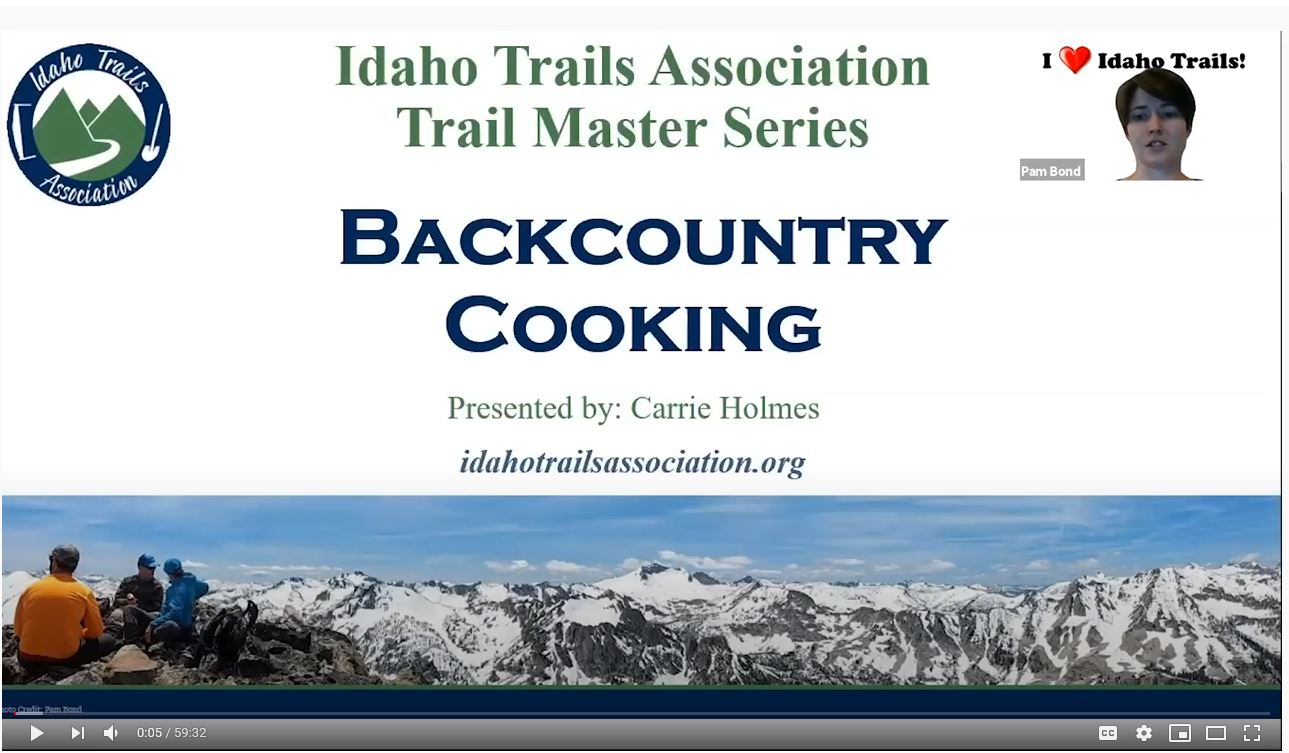 Tired of eating pre-package backpacking meals? Guest speaker Carrie Holmes, a certified health coach, wants to help YOU spice up your backpacking meals. She will cover general hiking and backpacking nutrition, incorporating plant-based options into your menu, and how to bring a cultural flair to your recipes. Carrie has done extensive research into foods and spices from other cultures and wants to help you create delectable meals that will make your hiking partners jealous.
Tired of eating pre-package backpacking meals? Guest speaker Carrie Holmes, a certified health coach, wants to help YOU spice up your backpacking meals. She will cover general hiking and backpacking nutrition, incorporating plant-based options into your menu, and how to bring a cultural flair to your recipes. Carrie has done extensive research into foods and spices from other cultures and wants to help you create delectable meals that will make your hiking partners jealous.
Link to Video: https://www.youtube.com/watch?v=TCOXG11Xcoc&feature=youtu.be
Link to PDF: ITA_Backpacking_Recipes
For the latest Boise National Forest updates visit: https://www.fs.usda.gov/main/
For all Boise NF closure information visit: https://www.fs.usda.gov/
Boise National Forest interactive closure story map: https://usfs.maps.arcgis.com/
National Forests in Idaho closure story map: https://usfs.maps.arcgis.com/
April 29. 2020
As Idaho prepares to reopen some businesses and lift its coronavirus-related stay-home order, some federal agencies are tightening or extending restrictions related to the pandemic.
In a news release on Tuesday, the U.S. Forest Service announced it would extend some closures in the Salmon-Challis National Forest and cancel permits to float the Salmon River and Middle Fork of the Salmon through mid-May. Any “developed recreation sites” including campsites and day-use sites are closed through May 15, while “Forest Trail #6232, the Warm Springs Trail and the area within 250 yards from the center of Gold Bug Hot Springs” will be closed through the end of May.
Officials said anyone with a float permit will receive an email notification that their permit has been canceled, as well as a refund of any fees. Permits are required year-round to float the Salmon River and Middle Fork of the Salmon, though the primary float season is from June to September.
Forest Service officials said the continued closures are meant to prevent the spread of coronavirus and the disease it causes, COVID-19.
“We have visitors that want to enjoy the forest but many areas are drawing more people than social distancing guidelines recommend,” said Chuck Mark, Salmon-Challis National Forest supervisor, in the news release. “As spring progresses, many of these recreation sites are beginning to become accessible. We will continue to monitor the situation closely. The forest is developing a plan to phase reopening some sites when conditions allow.”
Similarly, the Boise National Forest announced on Friday that it would extend closures at campgrounds, hot springs and trailheads through June 30 due to the pandemic. The agency had previously announced that many popular campgrounds near Boise, including Cottonwood, Sage Hen and Peace Valley, would be closed through the end of June; however, its early April closure of hot springs had no initial expiration date.
A list of all affected Boise National Forest sites can be found online at fs.usda.gov.
Also on Tuesday, the U.S. Army Corps of Engineers announced restrictions at Lucky Peak Dam. The Corps said, until further notice, fires and camping are prohibited and boats are required to be docked at a marina or out of the water between sunset and sunrise. According to the Corps’ news release, the restrictions were “made in response to public safety and resource protection concerns,” though it’s not clear if they are related to coronavirus. The Statesman has reached out to the Corps for more information.
 BNF-Closed PDF 04-03-2020 Idaho COVID Group Limits of 10 order SIGNED
BNF-Closed PDF 04-03-2020 Idaho COVID Group Limits of 10 order SIGNED
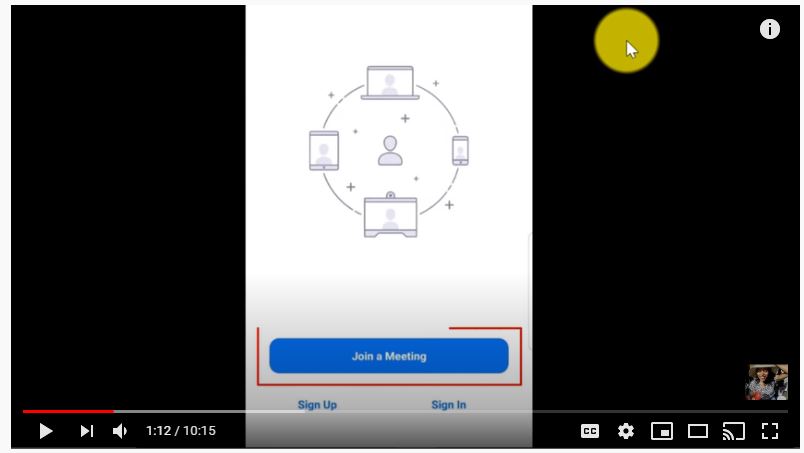 HOW TO USE ZOOM MOBILE APP ON YOUR IOS OR ANDROID PHONE step by step in 2020. I cover how to install zoom free app on your IOS or android phone for video conferencing. You will learn how to join a meeting and how to host a meeting on your phone. I will also take you through the user interface of the zoom mobile app.
HOW TO USE ZOOM MOBILE APP ON YOUR IOS OR ANDROID PHONE step by step in 2020. I cover how to install zoom free app on your IOS or android phone for video conferencing. You will learn how to join a meeting and how to host a meeting on your phone. I will also take you through the user interface of the zoom mobile app.
ZOOM MOBILE APP ON YOUR PHONE :https://www.youtube.com/watch?v=sOJkfflN8O4
FULL ZOOM DESKTOP TUTORIAL: https://www.youtube.com/watch?v=9isp3qPeQ0E&t=1s
However, using the zoom app on your phone has its limitations. For example there are limited display options on the zoom mobile app. You can only have four faces on the same screen at a time whereas on the desktop you can have up to 25 participants on a single screen. The virtual background feature is only supported on IOS and you may not be able to record meetings on some phoneS. The zoom app, however is very convenient for informal virtual meetings and small group conferences. Thank you for watching and like the video if it is helpful.
You will receive a meeting invite by email with a meeting ID and Password prior to the meeting date. It will look something like this. Meeting will be short, typically around 30 minutes so if you have items you want to cover, please email Ron Fergie so he can add it to the schedule. Include briefly what you want to cover.
Rob Adams is inviting you to a scheduled Zoom meeting.
Topic: Squaw Butte BCHI
Time: Apr 23, 2020 07:00 PM Mountain Time (US and Canada)
Join Zoom Meeting:
https://us04web.zoom.us/j/74462237852?pwd=d0VqWVBMVFVpN000Z2JDTlNSOGV5dz09
Meeting ID: 744 6223 7852
Password: 1pr6B1

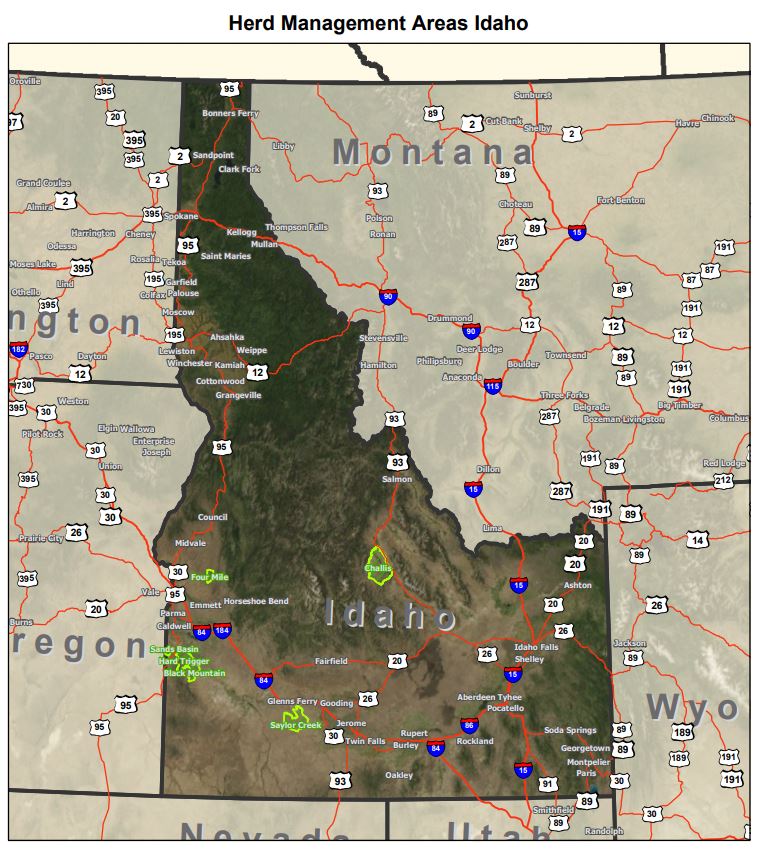
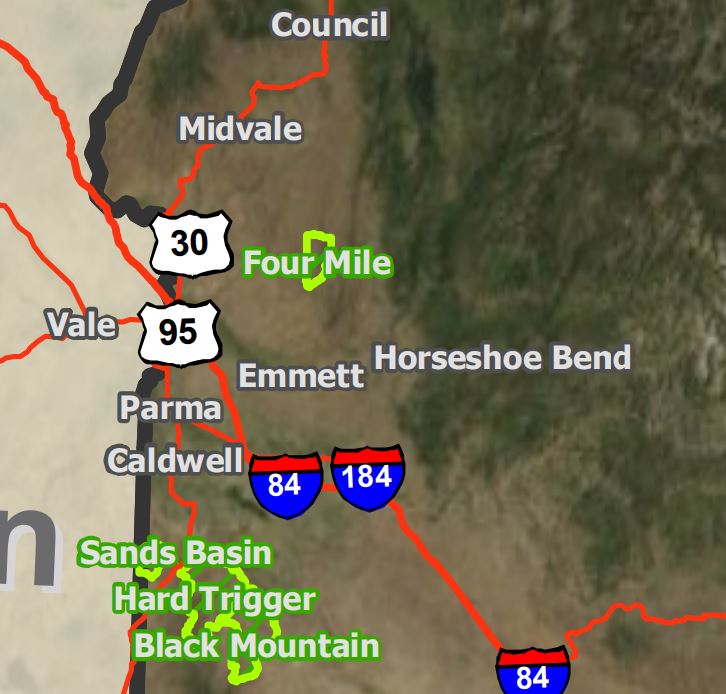 About 15 miles north of Emmett is 25,806 acres of rolling hills, prominent buttes and ridgelines that make up the Bureau of Land Management’s Four-Mile Wild Horse Management Area (HMA). Elevations vary from 2,500 to about 5,400 feet.
About 15 miles north of Emmett is 25,806 acres of rolling hills, prominent buttes and ridgelines that make up the Bureau of Land Management’s Four-Mile Wild Horse Management Area (HMA). Elevations vary from 2,500 to about 5,400 feet.
The Four-Mile population census taken in February 2018 was 128 horses according to Boise District BLM Wild Horse and Burro Specialist Raul Trevino.
History of Gem’s wild horses
The Four-Mile horses originated from domestic stock owned by those living in the Big Willow Creek and Four-Mile Creek areas. Pinto horses were raised by Jack Macomb in the 1930s in the Four Mile Canyon. Others raised horses in the area including Nelson McCullough on Willow Creek, Tom Wilburn on South Crane Creek and Walter Knox on the Indian Jake Ranch. These horses were not considered wild according to the BLM until people came and tried to catch them or chase them. Being difficult to corral, they were considered wild. Sixty-five privately owned horses were rounded up and removed in 1965.
At the passage of the Free Roaming Horse and Burro Act in 1971, two HMAs were identified and BLM was given authority to manage wild horses and burros on public lands. There were 75 horses in the 4-Mile HMA and West Crane HMA. Decisions removed the horses permanently from West Crane and reduced the Four-Mile to the appropriate management level of 20 head for rangeland health.
An aerial survey in 1972 counted a total of 13 adult and two foals. Of those, one was a mule, one wore a halter and another horse wore hobbles.
During a 1986 wildfire in the Four-Mile HMA, 14,000 acres burned. The horses were removed January 1987 due to a lack of forage on their home range and to allow vegetation recovery. The area was aerially seeded with grasses and forbs. Then in the fall of 1991, nine horses from the Owyhee Resource Area were introduced back into the Four-Mile HMA. Three years later there were 12 head on 18,018 acres.
Currently there are 128 horses in the HMA. The Low Allowable Management level is 37 head for the area, so the BLM is in the process of gathering and removing horses to meet the allowable number. BLM manages a total of six wild horse herd management areas in Idaho on approximately 418,000 acres of private, public and state lands.
As of March 1, 2018, the wild horse and burro population on public lands was estimated at 82,000 animals, which is more than triple the number of animals the land can support in conjunction with other legally mandated land uses. Four-Mile HMA is also overpopulated.
On April 16, 2020 Phil Ryan and Rob Adams rode the south west corner of the HMA. We saw more then 75 wild horses at least 12 of them were this year’s foals. There were also a number that look to be yearlings. WATCH VIDEO
 Washington state is gearing up for a new challenge this year – fighting wildfires in the time of coronavirus.
Washington state is gearing up for a new challenge this year – fighting wildfires in the time of coronavirus.
Fire season is already here, too — 160 fires have sparked so far statewide, with 30% of them in the western part of the state. Thursday, Dept. of Natural Resources crews were fighting two of the largest fires burning near Arlington in Snohomish County, and Acme, in Whatcom County.
“It’s been challenging to fight fire, and to get people trained up this year,” said Jay Guthrie, asst. region manager for Forest Practice and Fire with the Washington Dept. of Natural Resources.
Spring training sessions have moved online, which makes it difficult to do the hands-on learning of firefighting. Prescribed burns were canceled. Crews are also trying to practice social distancing – keeping at least six feet apart while working in the field.
They do have one thing going for them already:
“Part of normal working safety is to keep 10 feet apart, so any swing of a tool is not within range of someone else,” said Guthrie.
State Commissioner of Public Lands Hilary Franz said they’re currently working with the federal government to rewrite the playbook for wildfires during a pandemic. READ MORE
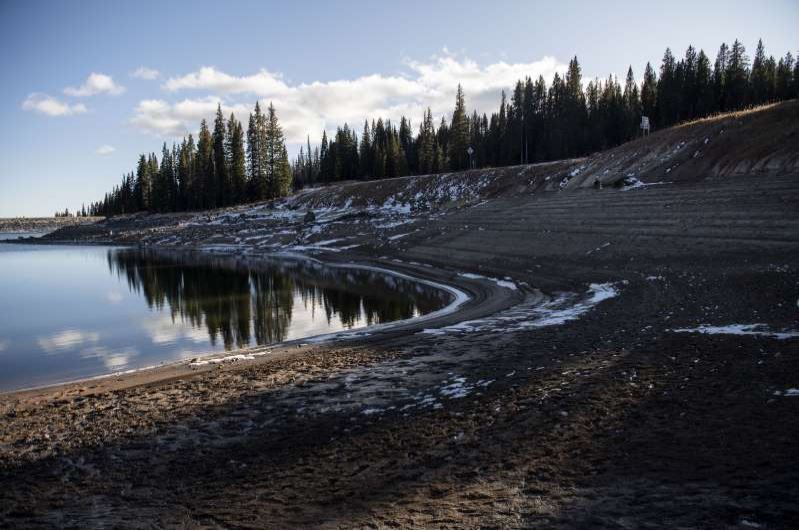 A vast region of the western United States, extending from California, Arizona and New Mexico north to Oregon and Idaho, is in the grips of the first climate change-induced megadrought observed in the past 1,200 years, a study shows. The finding means the phenomenon is no longer a threat for millions to worry about in the future, but is already here.
A vast region of the western United States, extending from California, Arizona and New Mexico north to Oregon and Idaho, is in the grips of the first climate change-induced megadrought observed in the past 1,200 years, a study shows. The finding means the phenomenon is no longer a threat for millions to worry about in the future, but is already here.
The megadrought has emerged while thirsty, expanding cities are on a collision course with the water demands of farmers and with environmental interests, posing nightmare scenarios for water managers in fast-growing states.
A megadrought is broadly defined as a severe drought that occurs across a broad region for a long duration, typically multiple decades.
Unlike historical megadroughts triggered by natural climate cycles, emissions of heat-trapping gases from human activities have contributed to the current one, the study finds. Warming temperatures and increasing evaporation, along with earlier spring snowmelt, have pushed the Southwest into its second-worst drought in more than a millennium of observations.
The study, published in the journal Science on Thursday, compares modern soil moisture data with historical records gleaned from tree rings, and finds that when compared with all droughts seen since the year 800 across western North America, the 19-year drought that began in 2000 and continued through 2018 (this drought is still ongoing, though the study’s data is analyzed through 2018) was worse than almost all other megadroughts in this region.
The researchers, who painstakingly reconstructed soil moisture records from 1,586 tree-ring chronologies to determine drought severity, found only one megadrought that occurred in the late 1500s was more intense.
Historical megadroughts, spanning vast regions and multiple decades, were triggered by natural fluctuations in tropical ocean conditions, such as La Niña, the cyclic cooling of waters in the tropical Pacific.
“The megadrought era seems to be reemerging, but for a different reason than the [past] megadroughts,” said Park Williams, the study’s lead author and a researcher at the Lamont-Doherty Earth Observatory at Columbia University.
Although many areas in the West had a productive wet season in 2019 and some this year, “you can’t go anywhere in the West without having suffered drought on a millennial scale,” Williams said, noting that megadroughts contain relatively wet periods interspersed between parched years.
“I think the important lesson that comes out of this is that climate change is not a future problem,” said Benjamin I. Cook, a NASA climate scientist and co-author of the study. “Climate change is a problem today. The more we look, the more we find this event was worse because of climate change.”
The study is part scientific grunt work, involving sifting through drought records to find past instances of comparable conditions, and part sophisticated sleuthing that employs computer models to determine how climate change is altering the likelihood of an event like this one.
Cook said the researchers analyzed climate models for the region, which showed warming trends and changes in precipitation. They compared soil moisture with and without global warming-induced trends, “and we were able to determine that 30 to 50 percent of the current drought is attributable to climate change.” READ MORE
 Black bears (Ursus americanus) are found throughout both the foothills and forests of Idaho. Between 20,000 and 30,000 black bears roam these wild lands. These bears share space with a human population that is expected to grow by more than 15 percent during the next 10 years. This means that human/bear encounters will continue and likely increase.
Black bears (Ursus americanus) are found throughout both the foothills and forests of Idaho. Between 20,000 and 30,000 black bears roam these wild lands. These bears share space with a human population that is expected to grow by more than 15 percent during the next 10 years. This means that human/bear encounters will continue and likely increase.
Every year, Idaho Fish and Game Department staff respond to dozens of calls from citizens reporting bears that have become become attracted to — and then accustomed to — human food sources such as garbage, bird seed, and pet food. Though the bears are just following their sensitive noses to high-calorie foods, being in constant contact with people can cause them to lose their natural wariness of humans. Bears intent on getting a good meal can cause harm to someone who gets in their way. For this reason, Fish and Game staff are regularly forced to euthanize some bears that have become too comfortable around people. That’s treating the symptom, not the cause of the problem.
Idaho’s mountain towns are a great place for humans, but why do bears like them so much?
Bears spend approximately one-third of the year in their den, sleeping through winter. To prepare for this, they spend most of their time during summer and fall fattening up by consuming as many calories as possible.
Contrary to popular belief, more than 90 percent of most black bear diets consist of vegetation: berries, nuts and plants. A bear’s keen nose can smell foods up to five miles away!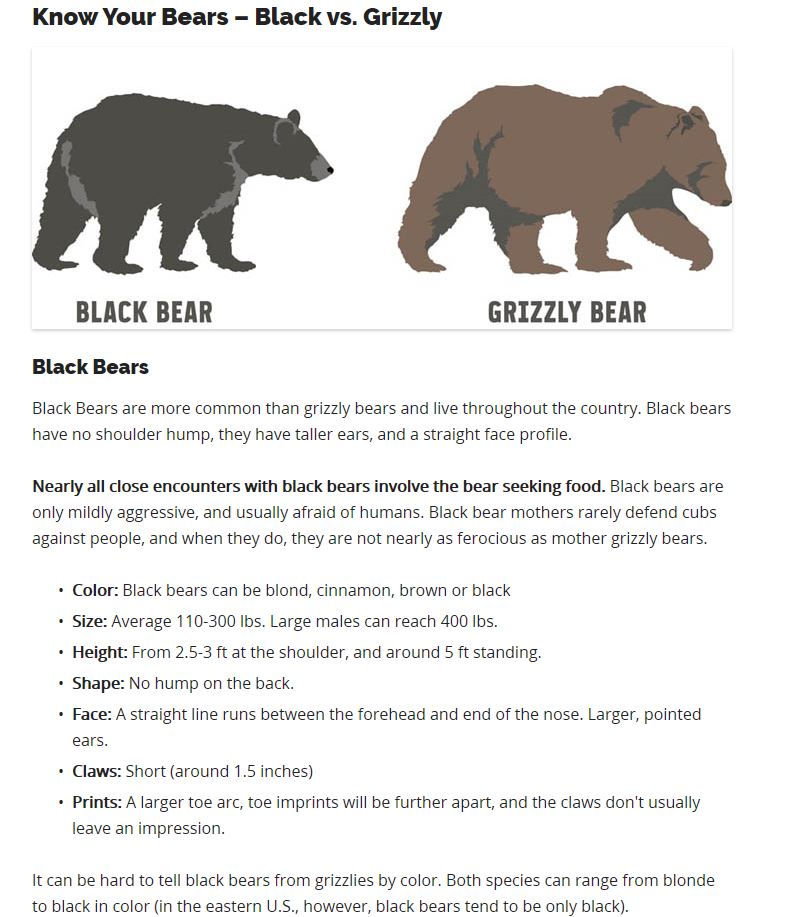
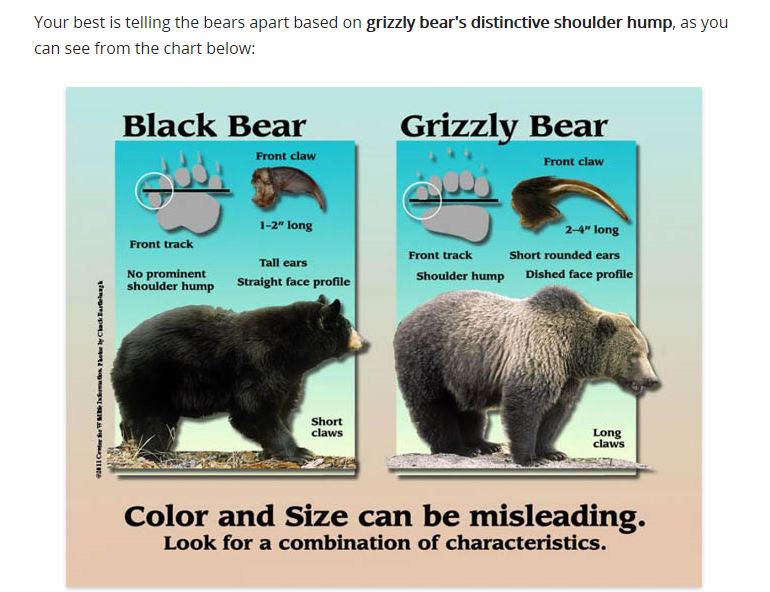
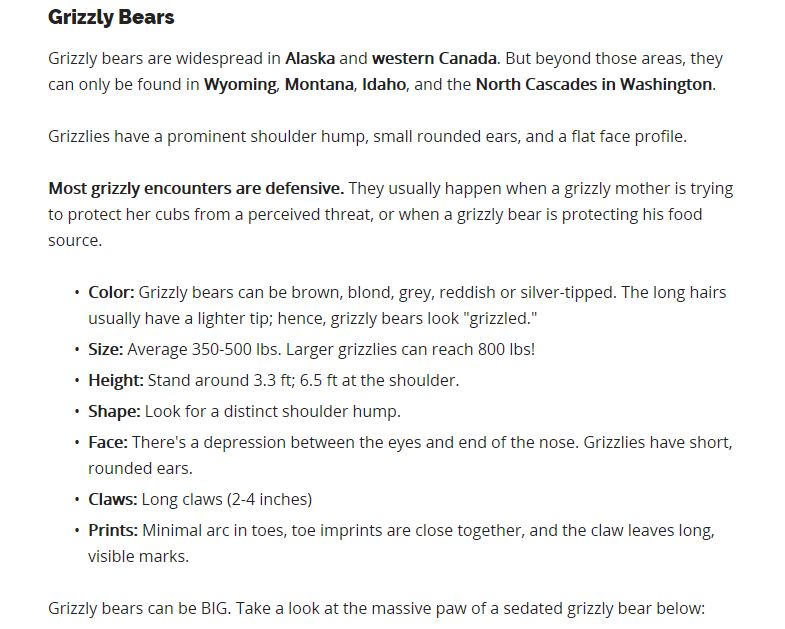
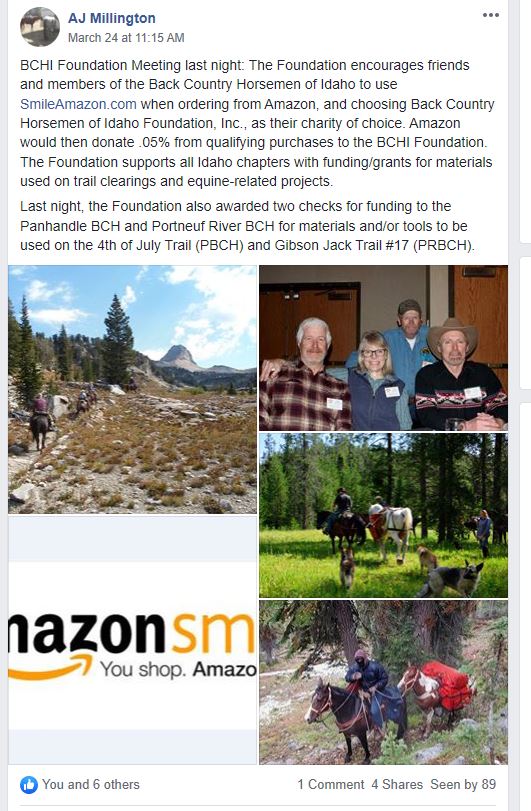
Facebook Pages: Treasure Valley Squaw Butte
This morning, as per the Foundation meeting last evening, I created a post on the Treasure Valley Back Country Horsemen of Idaho FaceBook site about the BCHI Foundation and SmileAmazon. At this point, I’ve texted someone at the following chapters asking them to “Share” the TVBCHI Foundation post to their FaceBook sites: (it is the first post TVBCHI FaceBook site): Eagle Rock, Cache Peak, Portneuf River, Squaw Butte, Priest River Valley, Selkirk, and Twin Rivers. I could not find an active site for the other chapters. However, if I’ve missed a chapter, please bring the post up in FaceBook and share to your FB sites.
Thank you,
Alice Millington
Foundation Secretary
208-475-4107
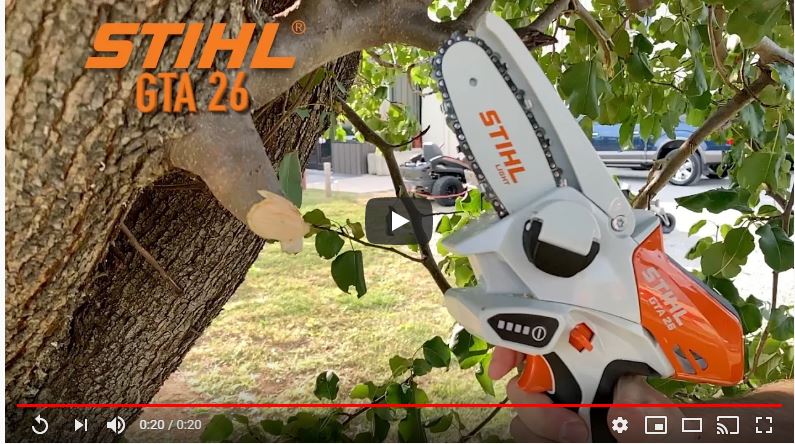 Video-1 Video-2
Video-1 Video-2
The battery-powered STIHL GTA 26 garden pruner is an innovative, versatile cutting tool for garden owners and will begin shipping in late 2019. The 10-centimeter guide bar and chain prunes small-diameter branches and cuts square and round timber. The tool is supplied with energy by a replaceable 10.8V rechargeable battery and is part of the new STIHL AS cordless system for private land and garden maintenance. This system also includes the new STIHL HSA 26 cordless shrub and grass shears which will be on the market in February 2020.
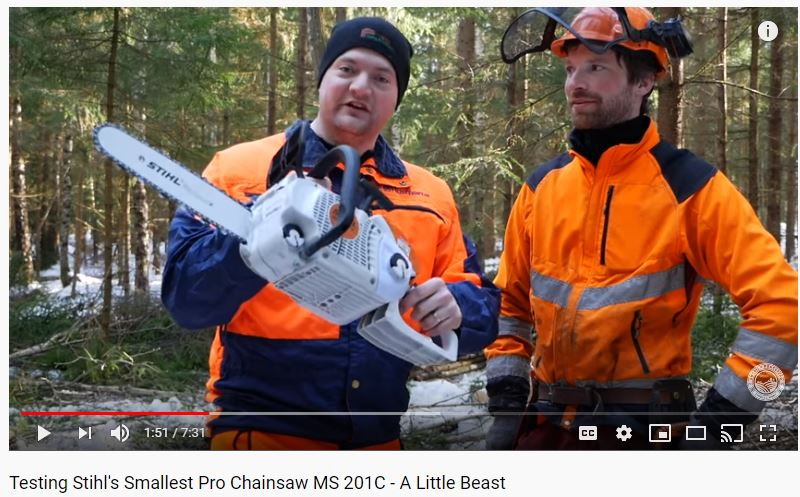 Video
Video
Swedish Homestead
182K subscribers
We got our hands on Stihl’s smallest professional chainsaw, the MS201C. It is a light weight but yet powerful saw meant for smaller tasks like thinning young forests and cutting firewood. Here is what we though about it.
Check out our other reviews:
Stihl MS462: https://youtu.be/6XJSekItbUQ
Husqvarna 572XP: https://youtu.be/Ge-LQ-MLJ_k
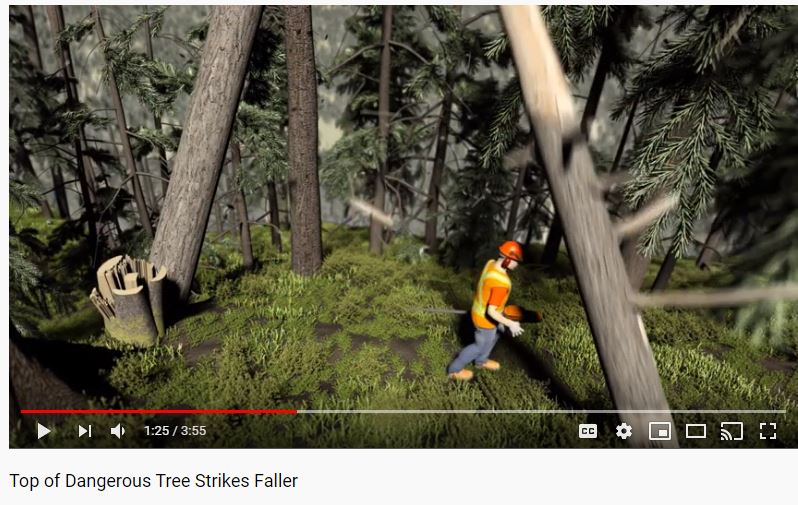
While falling a dangerous tree, a faller was struck by its top section and fatally injured. The tree was severely decayed, causing it to be unstable and to fall in an unintended direction.
Watch Video
 READ the Whole Story: solar power for your trailer
READ the Whole Story: solar power for your trailer
 Situated along the Snake River, Celebration Park was established as Idaho’s only archaeological park in 1989. A walk through the huge basalt melon gravels deposited by the Bonneville flood reveals petroglyphs 100 to 10,000 years old. Visitors learn about the Paleolithic and Archaic lifeways and enjoy throwing a dart with an atlatl. Experience a walking tour of historic Guffey Railroad Bridge and be captivated by southwest Idaho’s early mining and railroad history. Archaeological sites are protected by state and federal law. Please be respectful of Celebration Park’s unique archaeology and cultural heritage. Celebration Park is on the western border of the Morley Nelson Snake River Birds of Prey National Conservation Area (NCA), which is managed by the Bureau of Land Management. For NCA visitor information, visit their website. The Snake River Islands near Celebration Park are part of the Deer Flat National Wildlife Refuge’s Snake River Islands Unit. Visit their website for information on rules and regulations, and habitat management practices on the islands. Video
Situated along the Snake River, Celebration Park was established as Idaho’s only archaeological park in 1989. A walk through the huge basalt melon gravels deposited by the Bonneville flood reveals petroglyphs 100 to 10,000 years old. Visitors learn about the Paleolithic and Archaic lifeways and enjoy throwing a dart with an atlatl. Experience a walking tour of historic Guffey Railroad Bridge and be captivated by southwest Idaho’s early mining and railroad history. Archaeological sites are protected by state and federal law. Please be respectful of Celebration Park’s unique archaeology and cultural heritage. Celebration Park is on the western border of the Morley Nelson Snake River Birds of Prey National Conservation Area (NCA), which is managed by the Bureau of Land Management. For NCA visitor information, visit their website. The Snake River Islands near Celebration Park are part of the Deer Flat National Wildlife Refuge’s Snake River Islands Unit. Visit their website for information on rules and regulations, and habitat management practices on the islands. Video 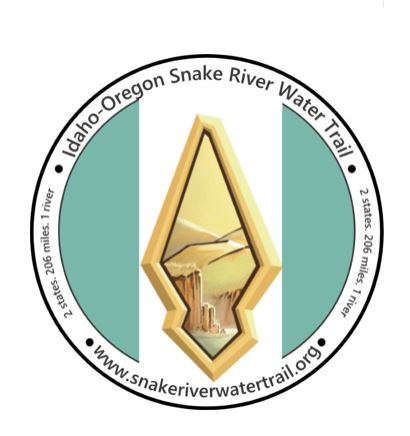
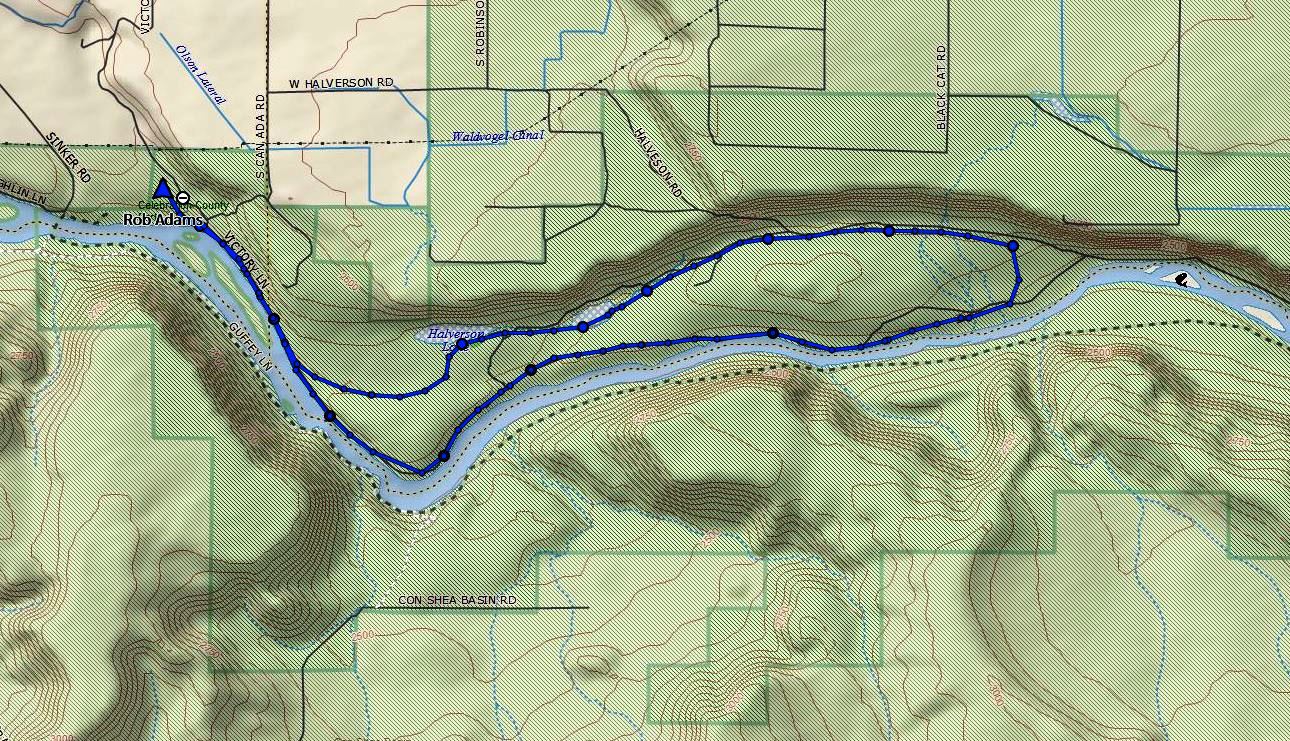 On a gray and breezy Sunday morning, members & friends of Back Country Horsemen of Idaho Squaw Butte Chapter meet at the trailer parking area of Celebration Park along the Snake River. The weatherman had promised a nice day for a ride, but at 10:00 people were skeptical. The group numbering over 25, broke into two teams and when they were ready rode a 10 mile loop following the cliffs while heading east and the river back west to the trailers
On a gray and breezy Sunday morning, members & friends of Back Country Horsemen of Idaho Squaw Butte Chapter meet at the trailer parking area of Celebration Park along the Snake River. The weatherman had promised a nice day for a ride, but at 10:00 people were skeptical. The group numbering over 25, broke into two teams and when they were ready rode a 10 mile loop following the cliffs while heading east and the river back west to the trailers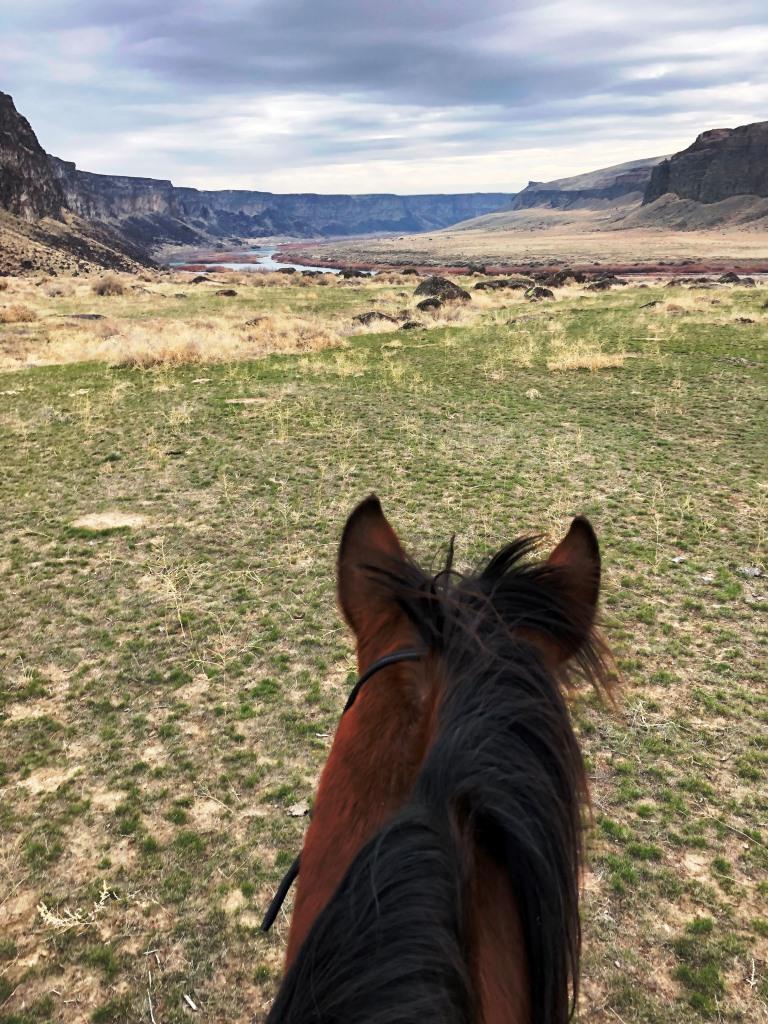
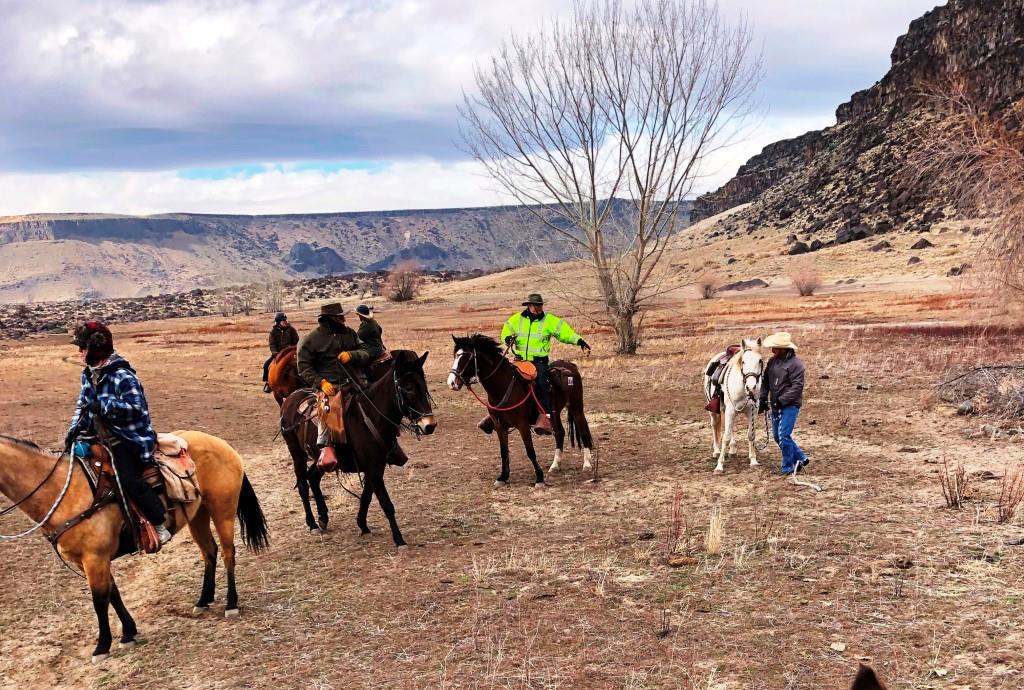
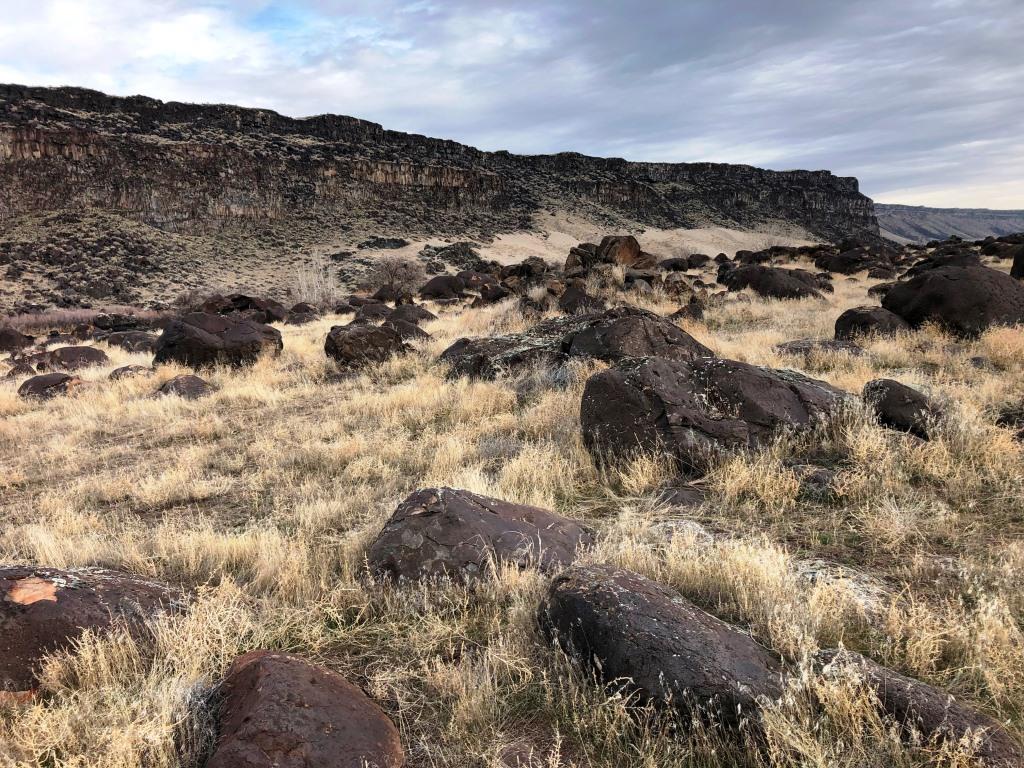
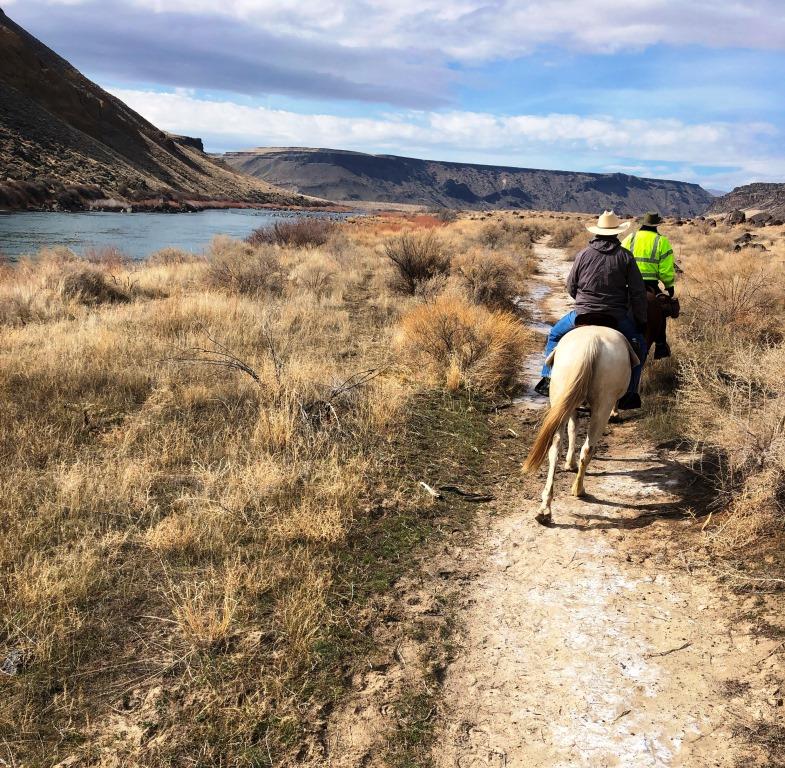 As the day progressed the weather improved the sky turned blue and when we were all back at the trailers was darn right nice. After taking care of the stock, finger snakes were broken out and everyone enjoy both the fare and the conversation.
As the day progressed the weather improved the sky turned blue and when we were all back at the trailers was darn right nice. After taking care of the stock, finger snakes were broken out and everyone enjoy both the fare and the conversation.
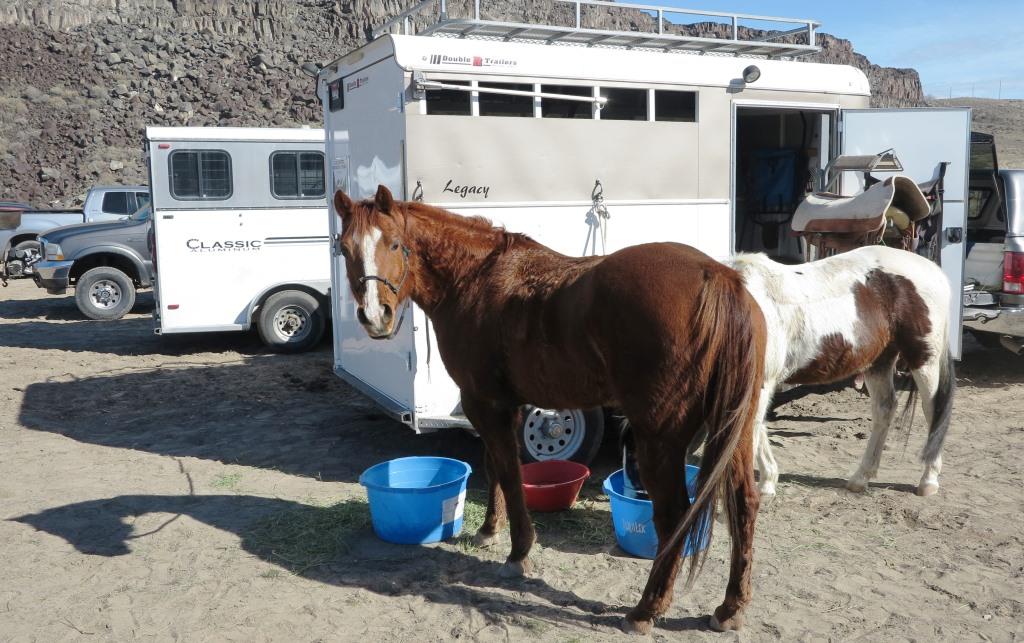
Hike the Hill
This week was the annual gathering of the national scenic and historic trail community in DC to educate Congress, meet with agencies, and build support for trails. NWSA was there along with Back Country Horsemen and other Wilderness groups to lend our voice and to expand opportunities for wilderness stewardship.
We are happy to report that the Forest Service Chief took this opportunity to express her full support for Shared Stewardship and to renew the NFS Trail Stewardship Partner funding for $200,000 in 2020. Find more details here.
This is in addition to the $200,000 already secured for Wilderness Stewardship Performance activities.
Applications for both programs are due by March 30th.
Webinars
Tuesday, March 10 at 1:00 PM Mountain
Leave No Trace — Refresher, Updates, Resources
Erin Collier, Brice Esplin, and Faith Overall
What’s new with Leave No Trace, and how can you incorporate the principles into your daily work? Erin Collier & Brice Esplin, Subaru/Leave No Trace Traveling Trainers, will provide a general Leave No Trace refresher with an emphasis on updates, research, and resources, geared toward wilderness stewardship groups and agency partners. Faith Overall, Leave No Trace’s Education and Outreach coordinator and volunteer for the Indian Peaks Wilderness Alliance will also join to provide a volunteer perspective and answer questions on getting more involved.
Wilderness Workshop Presentations and Videos
Many presentations at the Workshop are posted on the WORKSHOP PAGE . You can also find the Program and Abstracts. Several of the main sessions were video taped and as soon as they are available will be placed on this page as well. The Final Plenary session and Derick Lugo’s Closing Presentation are now available online.
The 2020 Funding Program Application Periods are Open
As noted above NWSA has two funding programs for wilderness stewards.
The Wilderness Stewardship Performance Partner Funding and
The National Forest System Trail Stewardship Partner Funding.
Both application periods will end March 30, 2020.
Now is the time to renew your memberships for 2020. WSP Funding requires a NWSA membership in order to apply.
In other Member News: Memberships will now track calendar years. Memberships renewals for 2020 began October 1st and are good for the entire calendar year 2020. Participate in Funding programs, get discounts to the National Wilderness Workshop and keep informed about national issues affecting wilderness stewardship.
Forest Service WSP Webinars now Posted
The latest WSP webinars are posted on Wilderness Connect. The webinars include the Plants element and Recreation Sites element.
These webinars can be found at the link below, along with the nine other WSP elements already posted and of course the other outstanding past and planned webinars by the Arthur Carhart National Wilderness Training Center, Aldo Leopold Wilderness Research Institute, and other great partners.
https://wilderness.net/practitioners/training/free-webinars/default.php
TAKE ACTION: SUPPORT PUBLIC LAND ACCESS NOW!
The time is here to add your voice in support of public access. The Public Access Protection Act (PAPA) was assigned a bill number and awaits introduction. Now, Senate leadership decides whether to allow the bill an introduction, opening the bill for public support or criticism.
If you support protecting public access, Senators Winder, Vick, Hill, and Heider need to hear from you- that you support PAPA and want a public introduction of S1317 in the Senate Resources Committee by February 26th. Enter your name on the form below to ask our state leadership to protect access to your public lands.
 Idaho Trails Supporter Fact Sheet
Idaho Trails Supporter Fact Sheet
Hey Folks – I have attached the fact sheet for our voluntary sticker program. The short – The voluntary sticker (or pass) is a $10 minimum donation available to the public on June 6th, National trails day. They will be primarily available online.
Thanks!
Tom Helmer
Non-Motorized Trails Program Manager
5657 Warm Springs Ave|Boise, ID 83716
tel (208) 514-2419 | mobile (208) 914-4821
**************************************************************************************
February 07, 2020
BOISE, Idaho
The director of the Idaho Department of Parks and Recreation said Friday that his agency is starting a voluntary trail pass program as part of a long-range goal to raise awareness and eventually money for non-motorized trail maintenance.
David Langhorst told the Legislature’s budget-setting committee that interest in the 900-mile (1,450-kilometer) Idaho Centennial Trail has been growing.
He said motorized trail groups have been effective in persuading lawmakers to tax or place fees on those user groups for trail maintenance.
But he said non-motorized trail users have been somewhat resistant to those kinds of user fees. He said the voluntary trail pass could help change minds.
If you’ve been looking for an opportunity to speak up for salmon, steelhead, and Idaho’s river communities, here’s an excellent opportunity!
This Friday, January 17th, the Governor’s Salmon Workgroup will hold a public comment period from 5-7pm in the Lincoln Auditorium at the State House in Boise: 700 W Jefferson St. Anyone is welcome to sit in on the meeting or sign up to give public testimony, and each individual will be allotted 3 minutes. We hope to see you there!
On Saturday, the group will meet at the University of Idaho Boise Water Center to conduct a group meeting amongst Workgroup members. The public is also invited to sit in on this meeting.
As a reminder, IWF is a member of the Workgroup and sits alongside a diverse group of stakeholders that represent varying interests throughout Idaho and the region.
You can find the full meeting agenda for both days here.
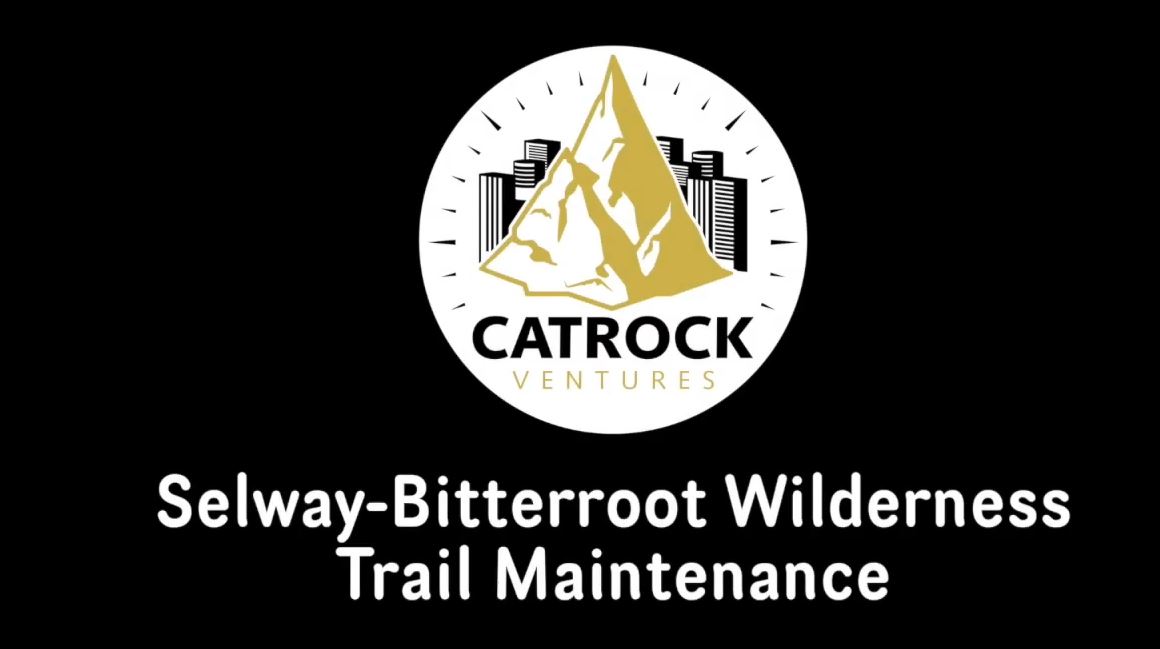 This past summer… a group of high school students traveled from the Bronx, NY (a borough of New York City) to the back country of Idaho.
This past summer… a group of high school students traveled from the Bronx, NY (a borough of New York City) to the back country of Idaho.
Can you imagine?
They were enrolled in a program called Catrock Ventures… and worked with the SBFC to clear 5 miles of trail, experience life in the wilderness, and learn Wilderness skills.
Click here to view a short video of their amazing journey!!
Catrock Venture’s mission is to reach, inspire, and empower low-income youth to become socially responsible change-makers.
Many of these kids have never been away from their neighborhoods in the Bronx… much less the state of New York.
The opportunity to experience some of the most wild places in America is truly a life-changing experience for them.
And we support their efforts…
We need our youth… all of them… to become stewards of our wild places. And help preserve wilderness areas for everyone to enjoy today… and far into the future.
I hope you enjoy the video.
This is Part 1 of 5 of the Crosscut Saw Filer. Warren Miller, author of the Crosscut Saw Manual, learned to file crosscut saws from Martin Winters, accomplished filer from the days when the crosscut saw reigned. Warren began filing saws in the 1970s and continues to pass on his knowledge at saw filing workshops today. USDA Forest Service, Missoula Technology and Development Center, 1123-2D03-MTDC.
Traditional Tools & Skills
Information provided in this toolbox is intended to support the use of Traditional Tools and Skills for administrative activities in wilderness. A process for determining the minimum requirement and minimum tool is described and information and training resources are provided. The toolbox features sections on common traditional tools (i.e. saws, axes, rigging, grip hoists, rock tools, etc.), travel methods (i.e. livestock, watercraft, sled dogs, etc.), and project examples (i.e. trails, weeds, etc.). To suggest new materials for inclusion, email Lisa Ronald at lisa@wilderness.net. Date of last update: 11/26/2018.
Introduction
Overview
The use of traditional tools and skills (TTS) for necessary administrative activities in wilderness is a basic principle of wilderness stewardship. The basis for this principle is found in the Wilderness Act itself and implemented through agency regulations and policy. The use of TTS or non-motorized tools and methods is directly related to both the purpose and the definition of wilderness as described in the Wilderness Act and agency policy.
Information provided in this toolbox is intended to support the use of TTS for administrative activities in wilderness. The use of TTS is mandated by both the Wilderness Act and agency policy and exceptions are made only when the use of motorized equipment or other prohibited uses are screened through narrow criteria. Comfort, convenience, economic efficiency, and commercial value are not standards of management in wilderness or criteria that are used to screen proposals to use something other than TTS. Assumptions about the use of TTS are often not true and can be overcome. Additional information and a process for making decisions related to use of TTS skills is contained in the Minimum Requirements Decision Guide.
Training and Information Contacts
- FS Regional Trainers and Information Contacts
- Ninemile Wildlands Training Center
- Missoula Technology Development Center Publications
- Student Conservation Association Traditional Skills Training
- Lightly on the Land-SCA Trails Manual
- Volunteer and Partner Training sources
- FS Regional Blasters Contact List
- BWCAW Trail and Campsite Maintenance Guide

